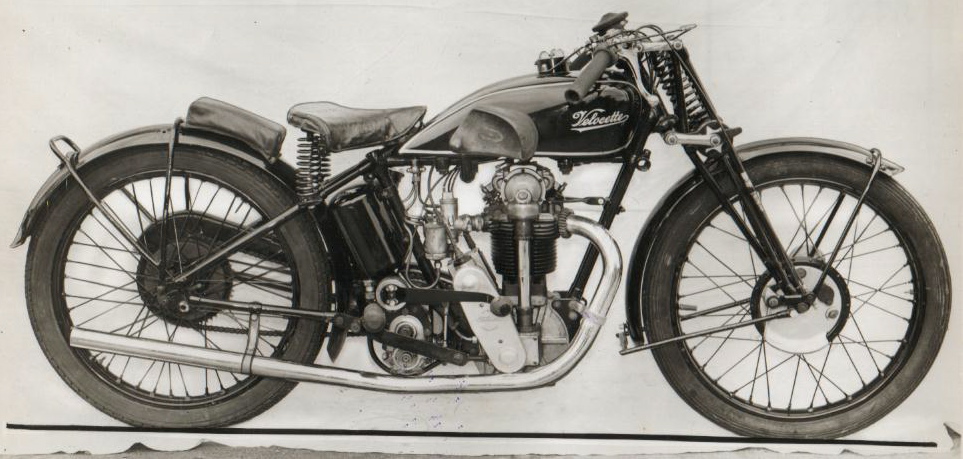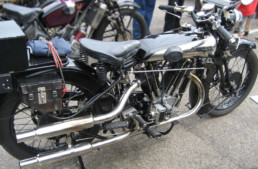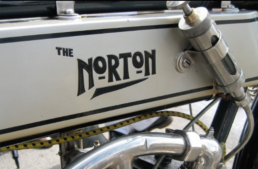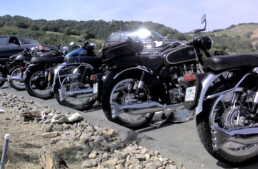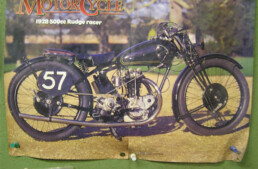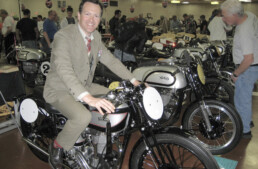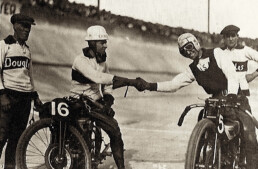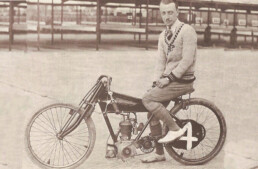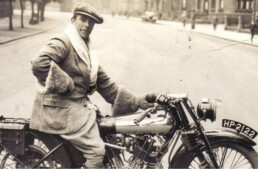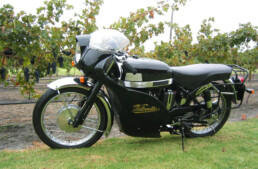2007 Banbury Run
The Banbury run is the biggest VMCC-sponsored event in the calendar, and is generally limited to 500 machines, ranging from 1897 to 1930, and they turned away hundreds more. The event is held on the grounds of a school in the eponymous town, which clearly has the capacity to park 500 motorcycles, plus a hundred or so post-vintage machines in the adjacent fields, and a large autojumble to boot. Top two pics show how crowded the grounds became as the day began, especially when the motorcycles were flagged off individually on a 40-mile regularity run in the surrounding countryside.
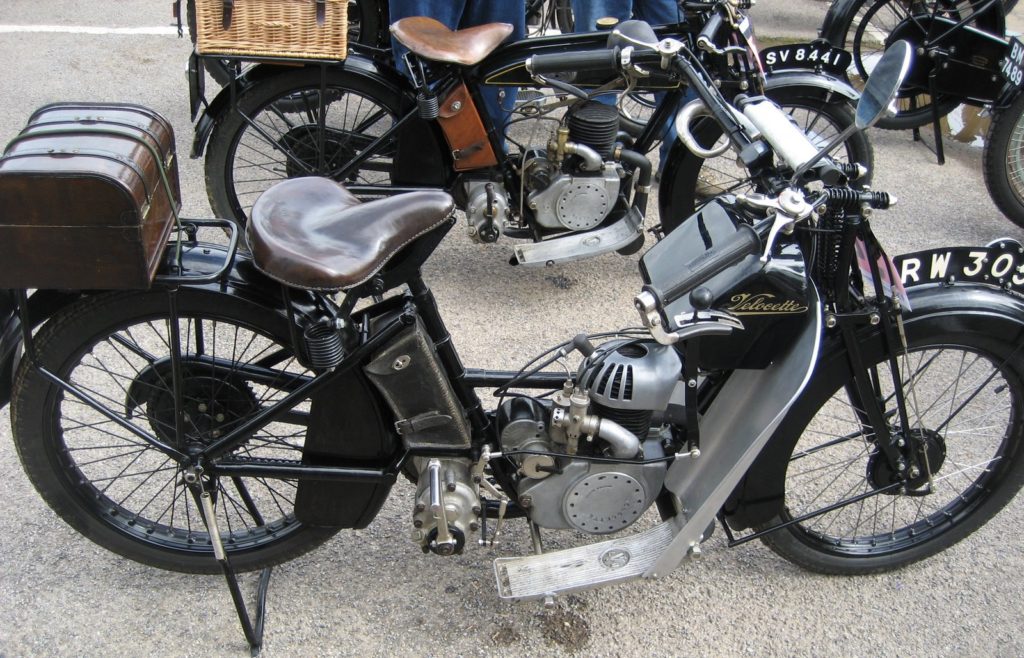
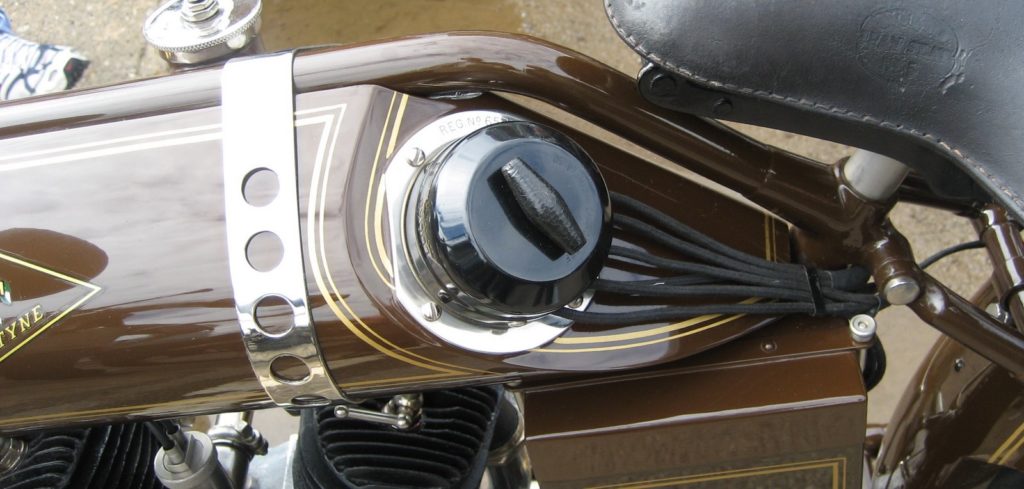
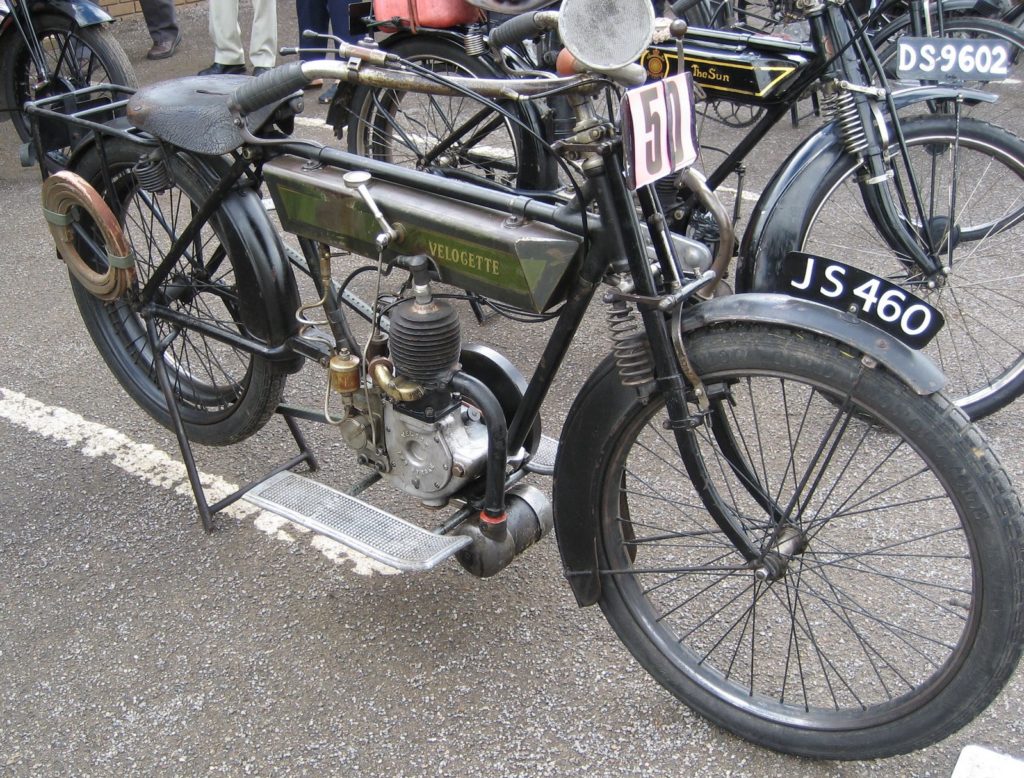

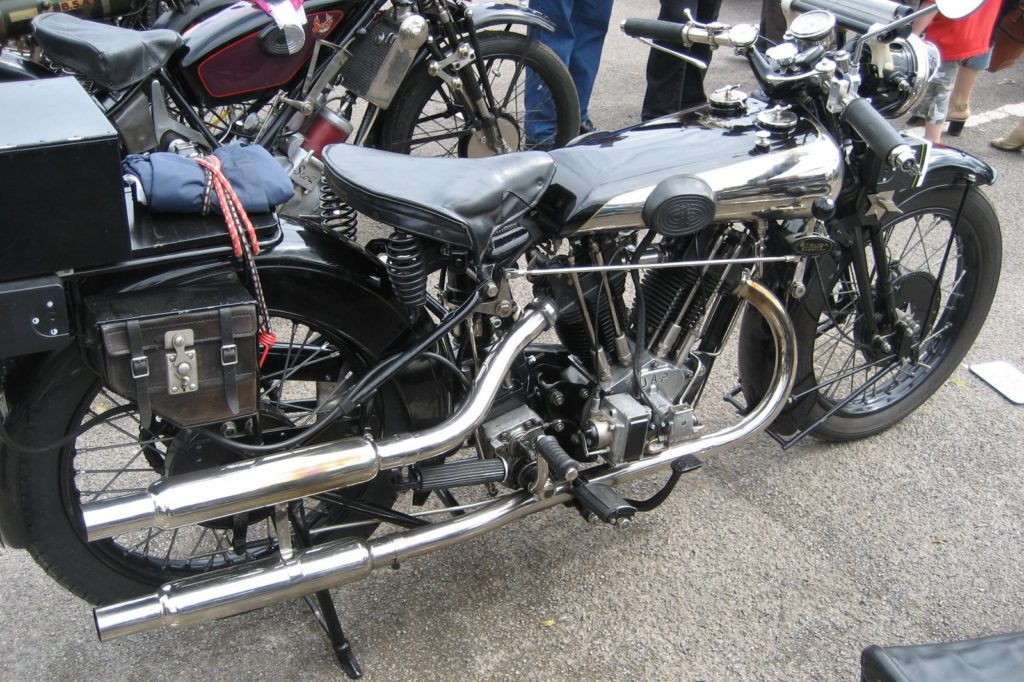
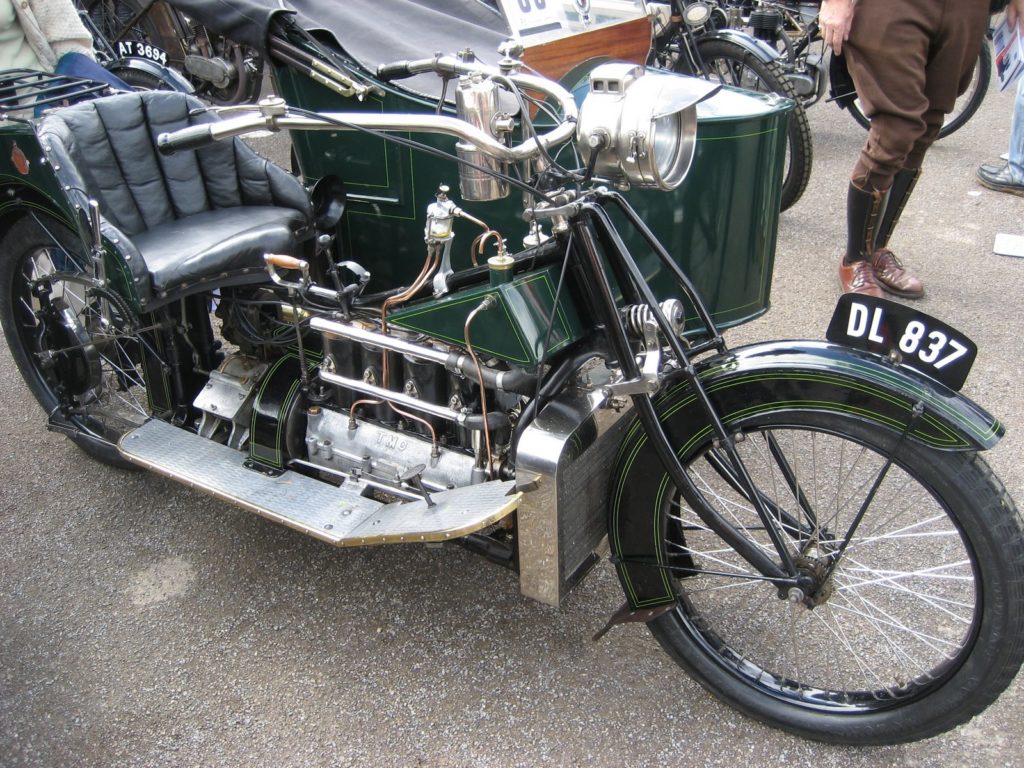

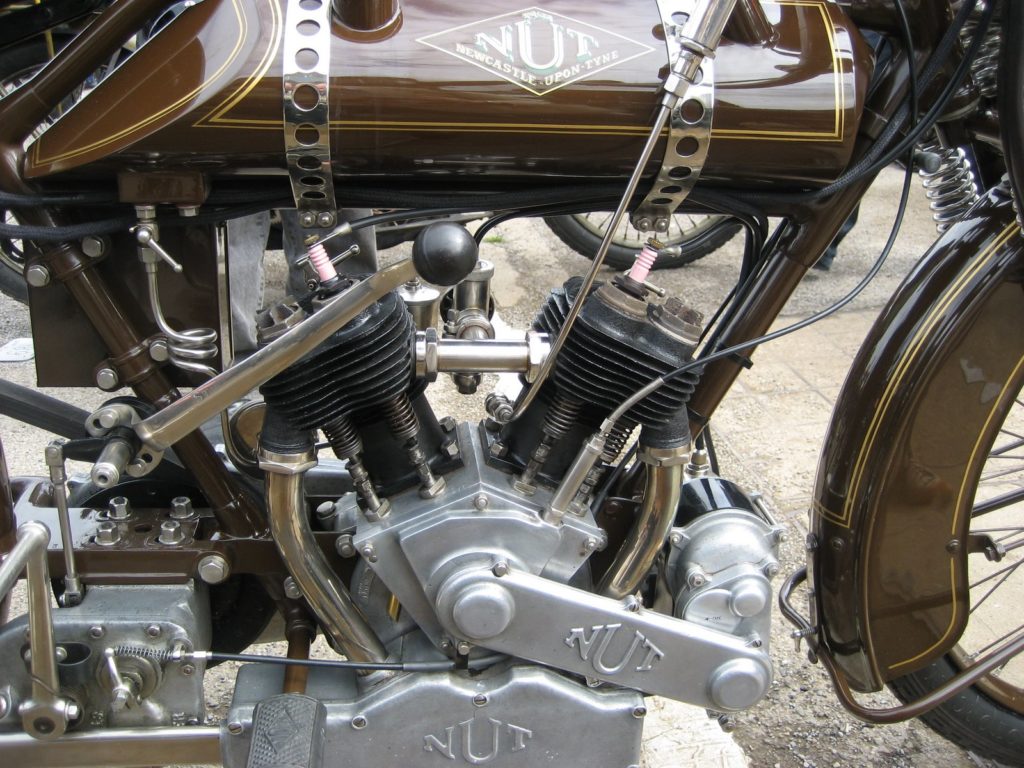

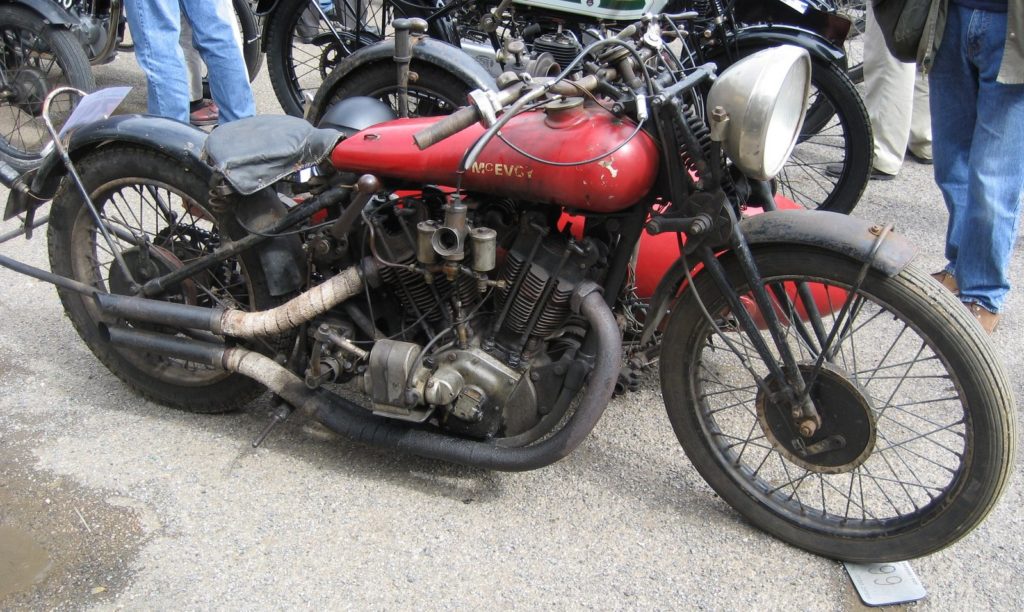

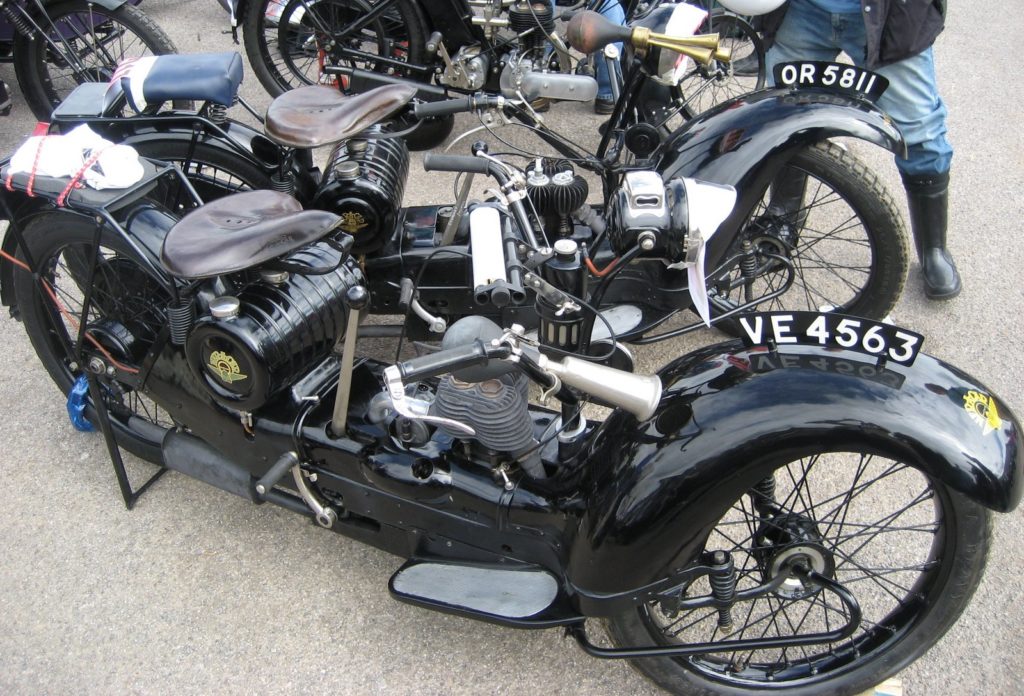


Rem Fowler's 1907 TT Norton
At the Brooklands Centenary meeting three weeks ago, I ran across George Cohen, he of the single-minded pursuit of all things Norton flat-tank. George is a great character, being formerly a psychiatric doctor in Somerset, England, and working on vintage Nortons in his spare time (his website is 'Norton Singles'). Well, apparently spare time got the better of him, and I believe he's given up his medical practice to pursue restoration of his beloved Nortons full-time; a move reinforce by by a commission from the National Motorcycle Museum to restore a replica of one of the most famous motorcycles extant, the winner of the first Isle of Man TT race in 1907 (multi-cylinder division - the single cylinder class was won by Charlie Collier on his Matchless), ridden by Rem Fowler.
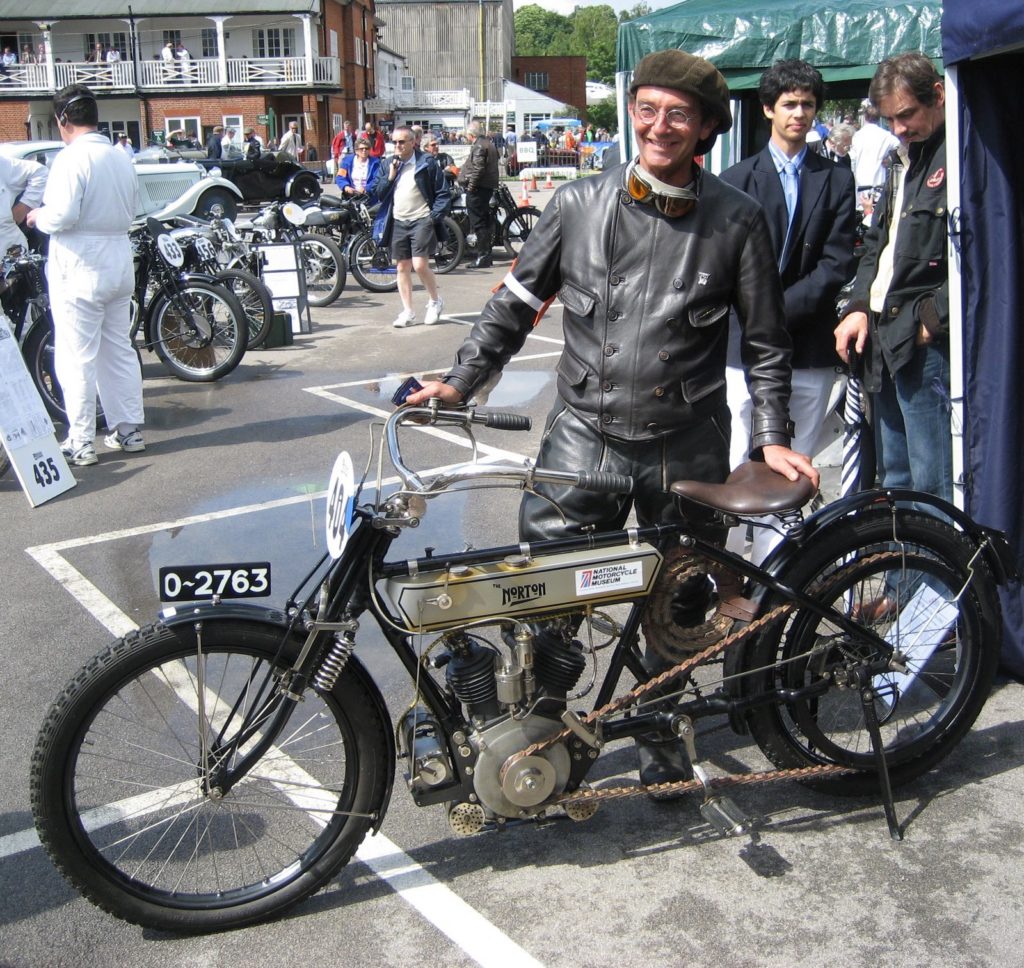

He had just returned in fact from the Isle of Man, where he rode this bike around the TT course for the Centenary celebrations there, and had a trouble-free run, no doubt thrashing this ancient racing moped around the course, as is his wont - George believes in using old Nortons as the maker intended. Having ridden with him on the track at Montlhéry [see our film on Montlhéry here] and in his sidecar near his home, I can confirm that he likes to push his machines to their limit. The third pic is an evocative portrait of the man in question, no doubt reaching for matches in the pocket of his Brooklands-style double-button racing jacket over leather jodhpurs, and obligatory reversed flat cap and goggles. He looked the part!
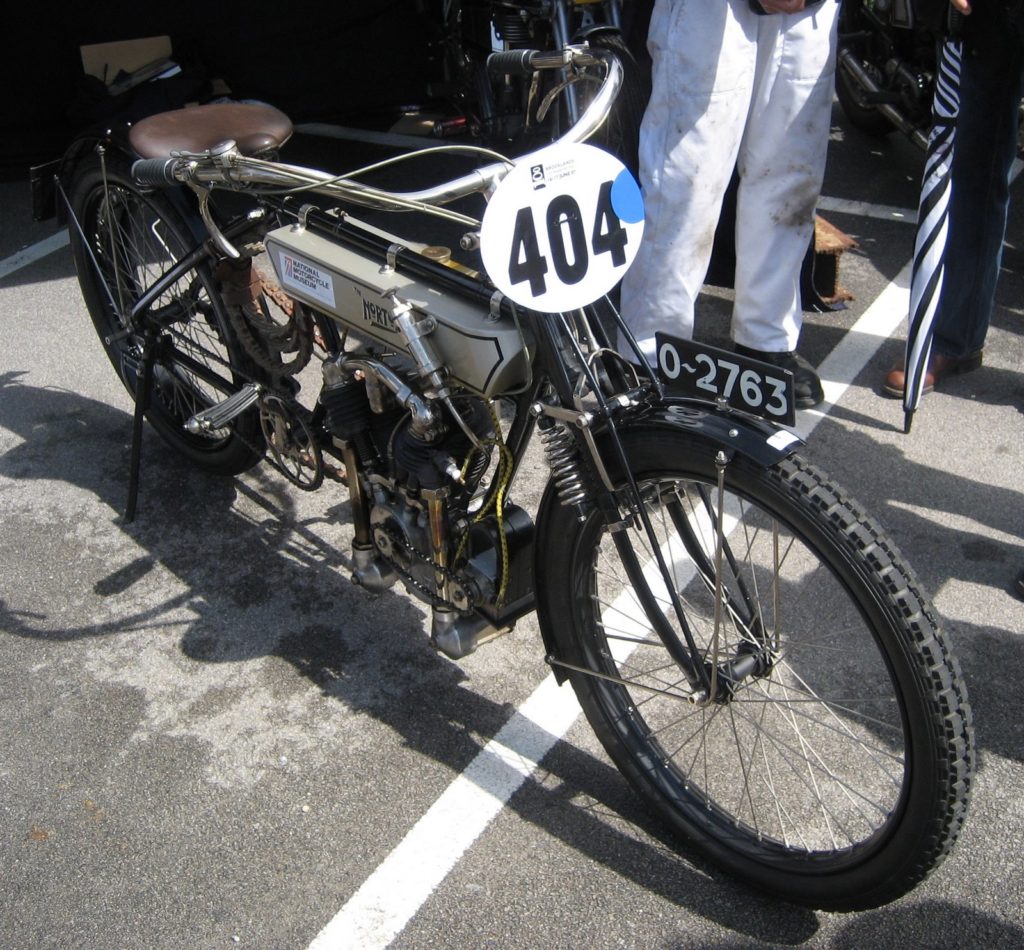
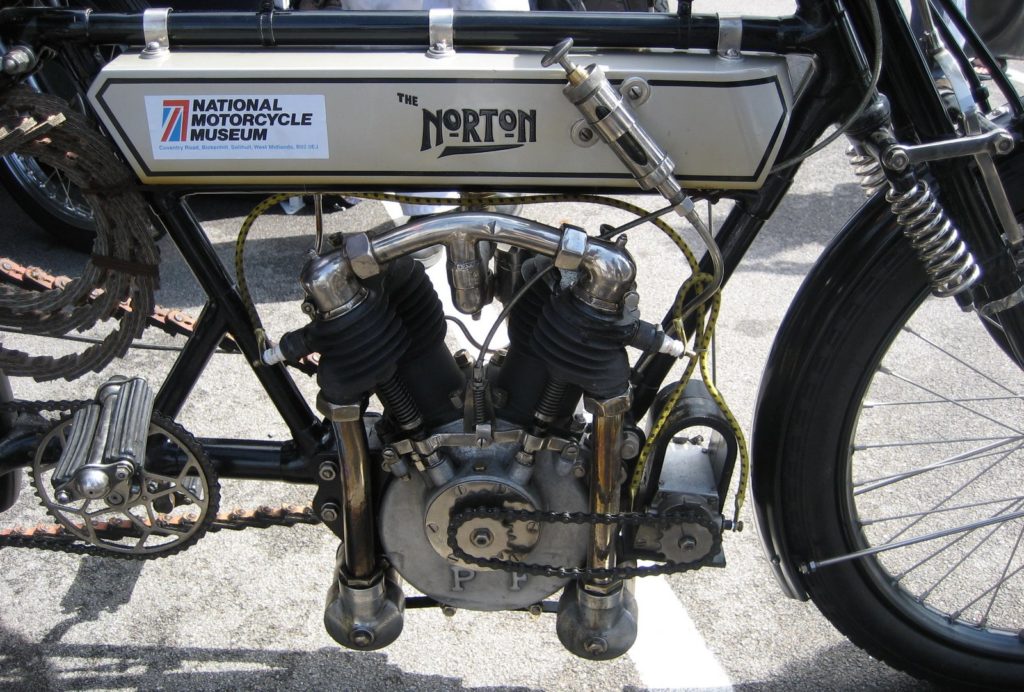
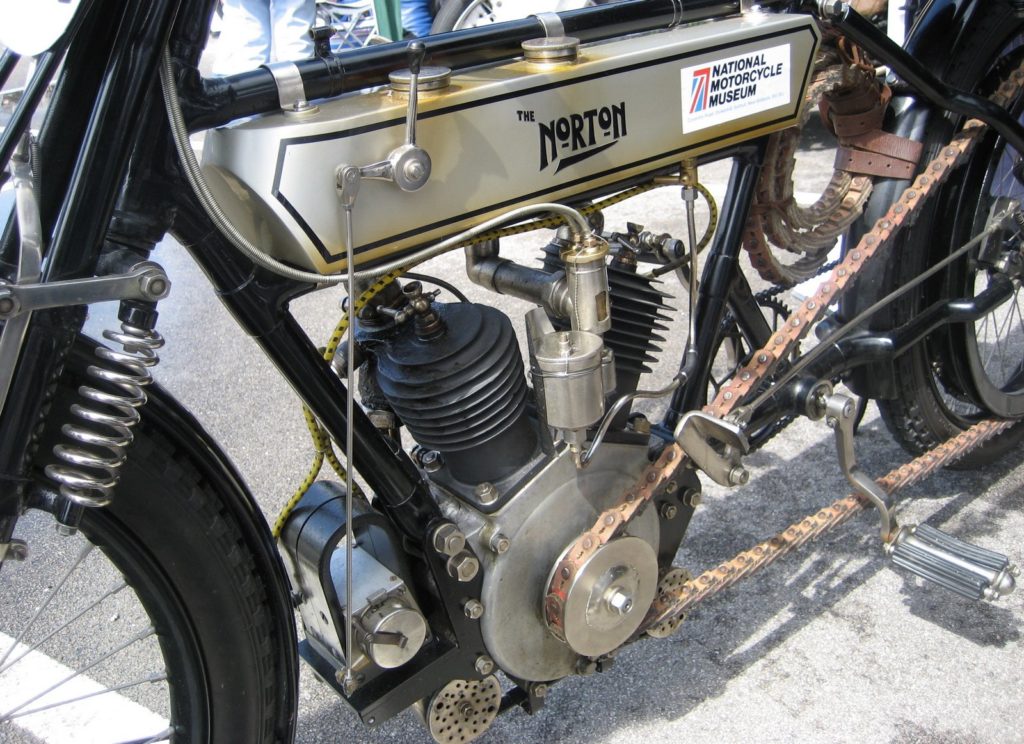
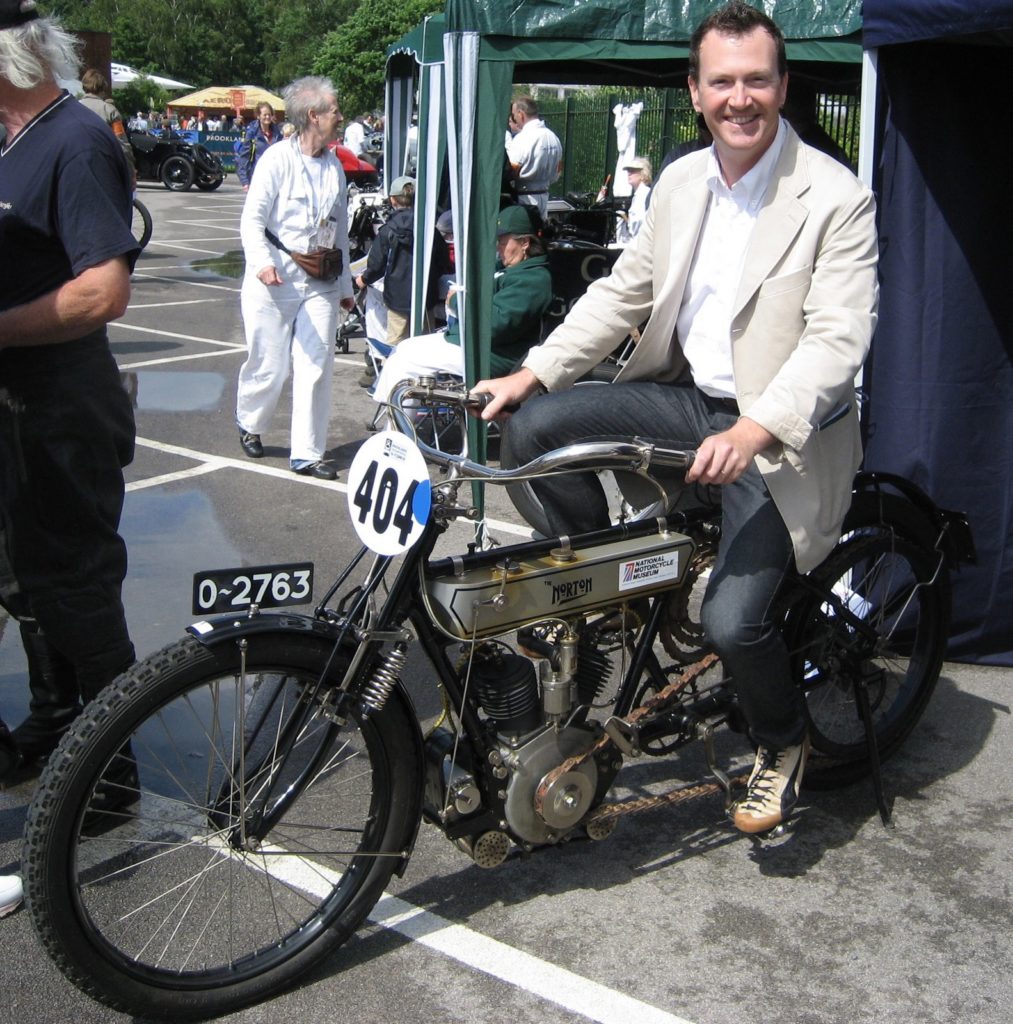
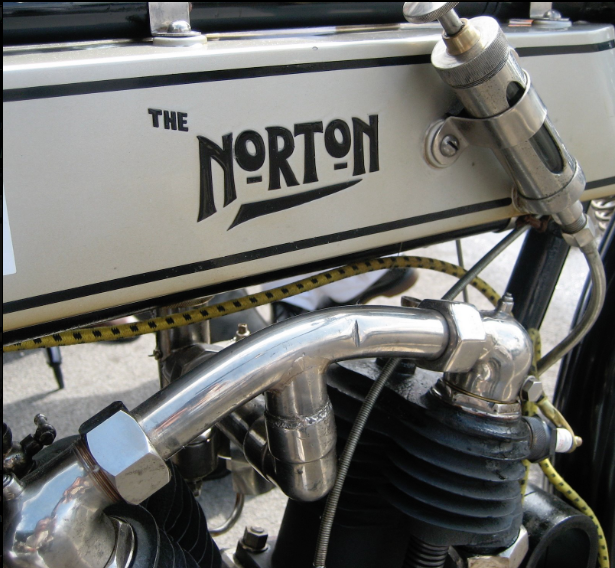

Velocette Spring Opener
The Velocette Owners Club sponsors an annual Spring Opener ride, hosted by John and Sue Ray at their 40-acre spread in the hills above Napa. Beautiful location, and the Rays are generous hosts, plus there's a lot of room to spread out the motorcycles, no matter how many show up. We met Saturday morning the 19th of May for a ride of about 70 miles through the amazing countryside around Napa and Lake Berryessa - perfect motorcycle roads, especially if your motorcycle has rear suspension, as some of the roads are badly paved and bumpy in the areas where you'd like to be cranked over.
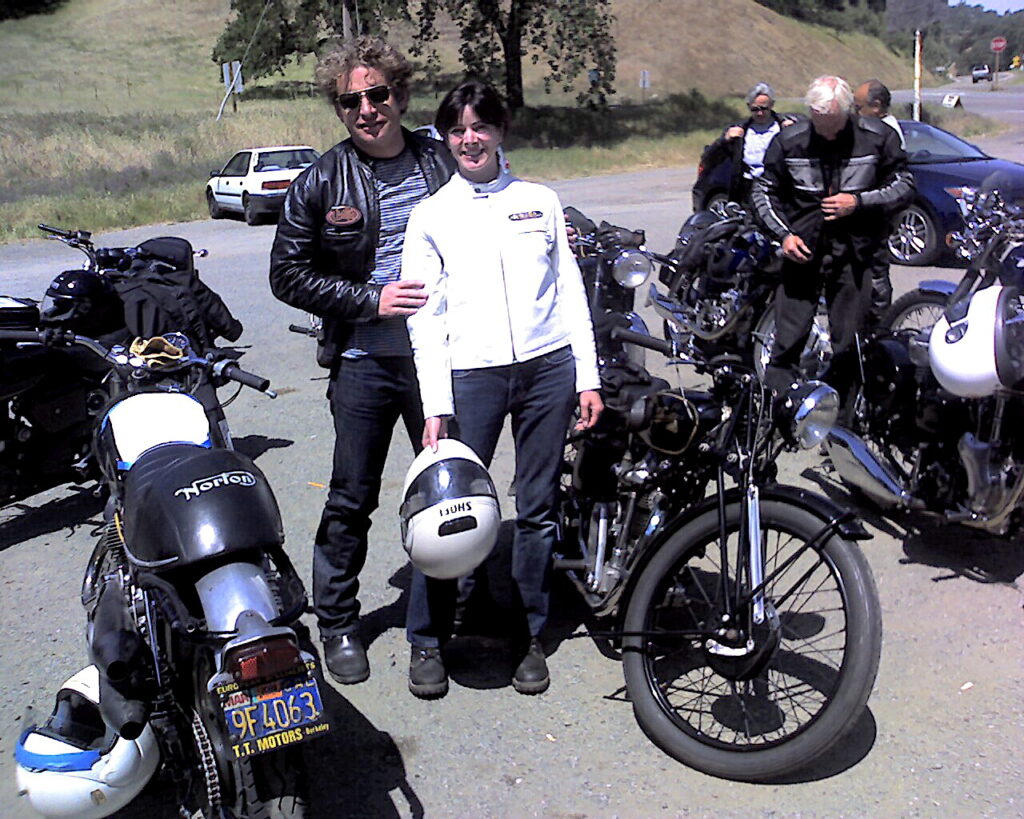
This year, as all my Velos were on the bench, I borrowed John's 1967 Velocette Thruxton [read our story on the Thruxton here], which is a fast and well-sorted machine. I think I kept my promise to only ride it to 80%, and I only opened the throttle WFO to pass a couple of cars along the way. Still, the bike is very fast through the twisty bits, and as that's all there is in the hills, away we went. Thanks John! There was only one mechanical mishap, when Kim Young's 1930 KSS had primary chain/clutch problems, which she's been trying to sort for a while. The bike has had a bit of teething trouble, and her husband Pete puts a lot of time and effort to ensure Kim has it available for rides.
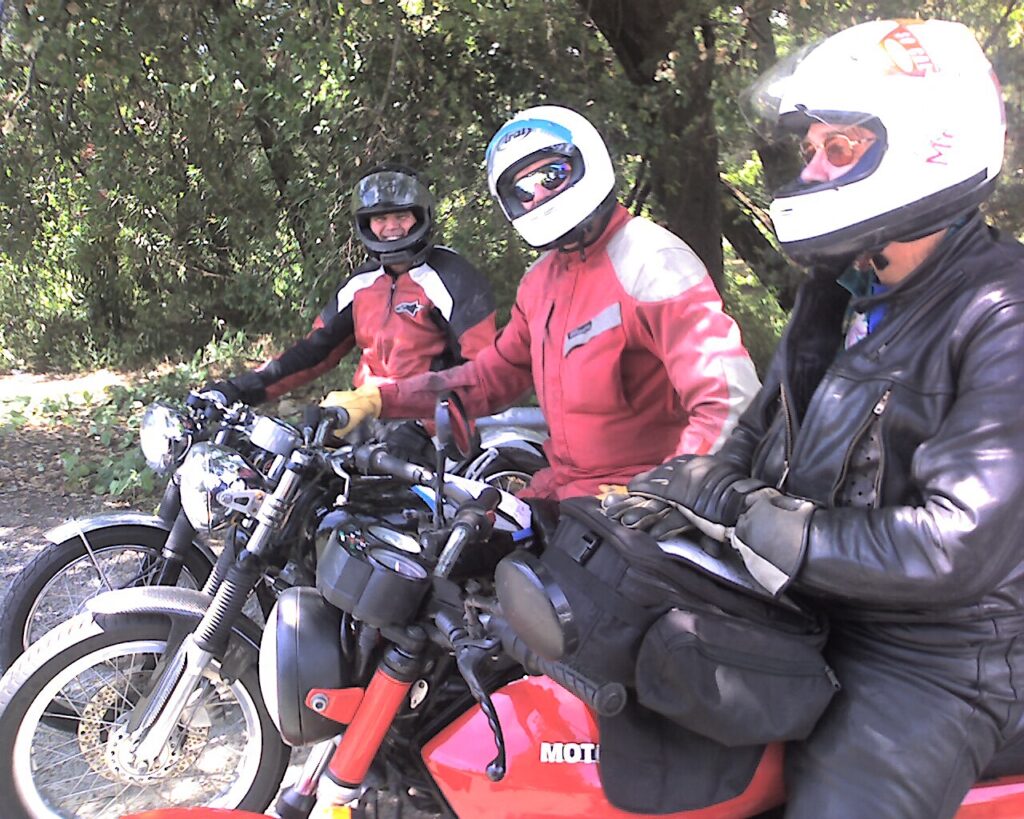
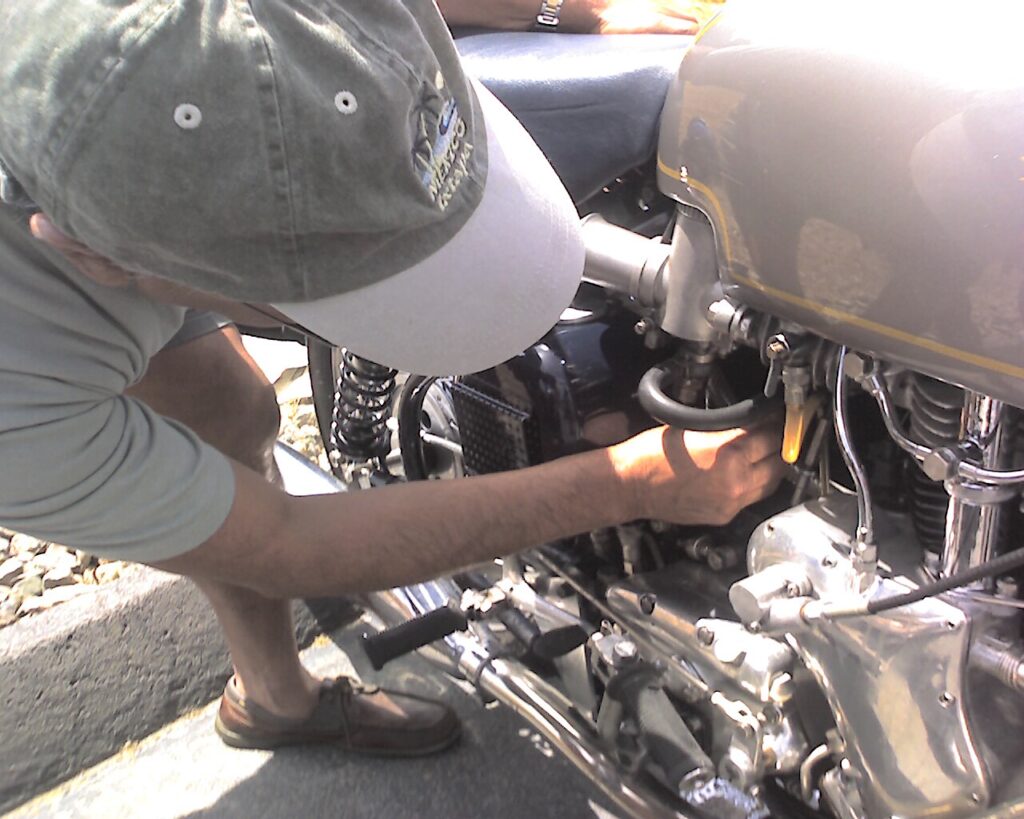
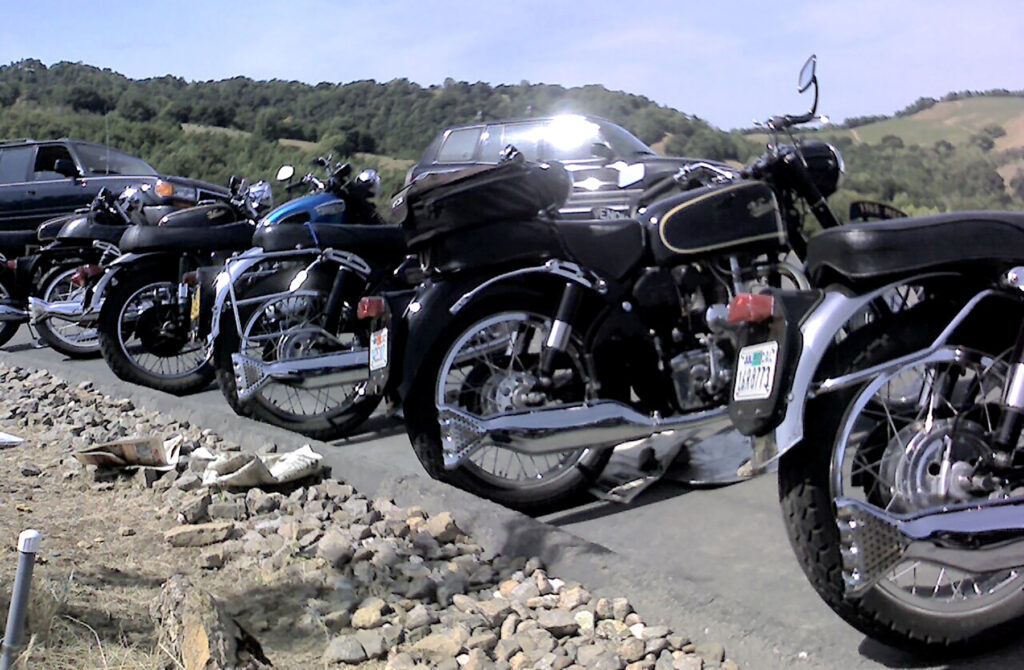

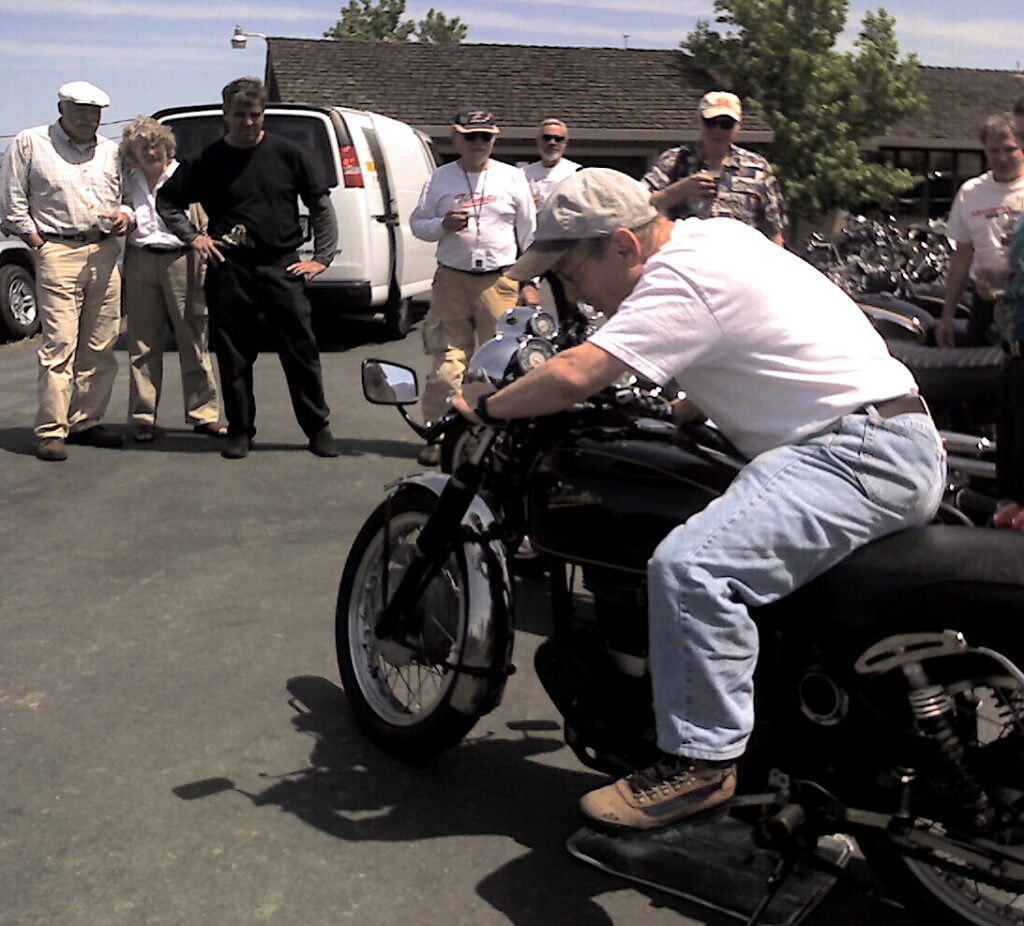

To join the Velocette Owner's Club of North America, click here! The club has an annual 1000-mile Summer Rally (since 1983), and set the gold standard for vintage riding clubs worldwide.

Legend Of The Motorcycle 2007 (Friday)
On entering the hotel forecourt at the Ritz-Carlton in Half Moon Bay, the first two-wheelers we encountered were a pair of MTT Jet bikes! Numbers 17 and 18 produced thus far; apparently there are that many people willing to pay $150k for a new motorcycle that melts car bumpers in traffic. Below is a video of the bike firing up in the forecourt of the Ritz, and filling the whole area with smoke!
https://www.youtube.com/watch?feature=player_embedded&v=FbW8y7wM1nI>
The sartorial accessory of the event (for the judges) was a Rolex Daytona, in varying shades of gold, stainless, and platinum. It's the watch du jour of motorcyclists who have 'made it'. The large belly was optional, but seemingly preferred, as it was popular.
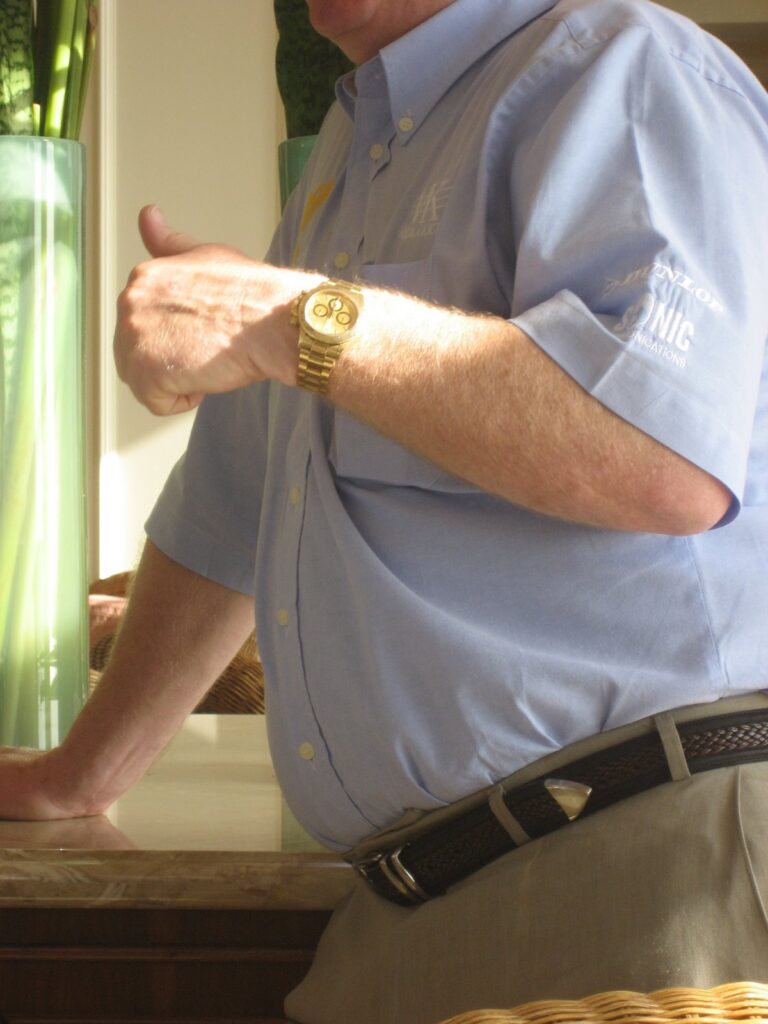
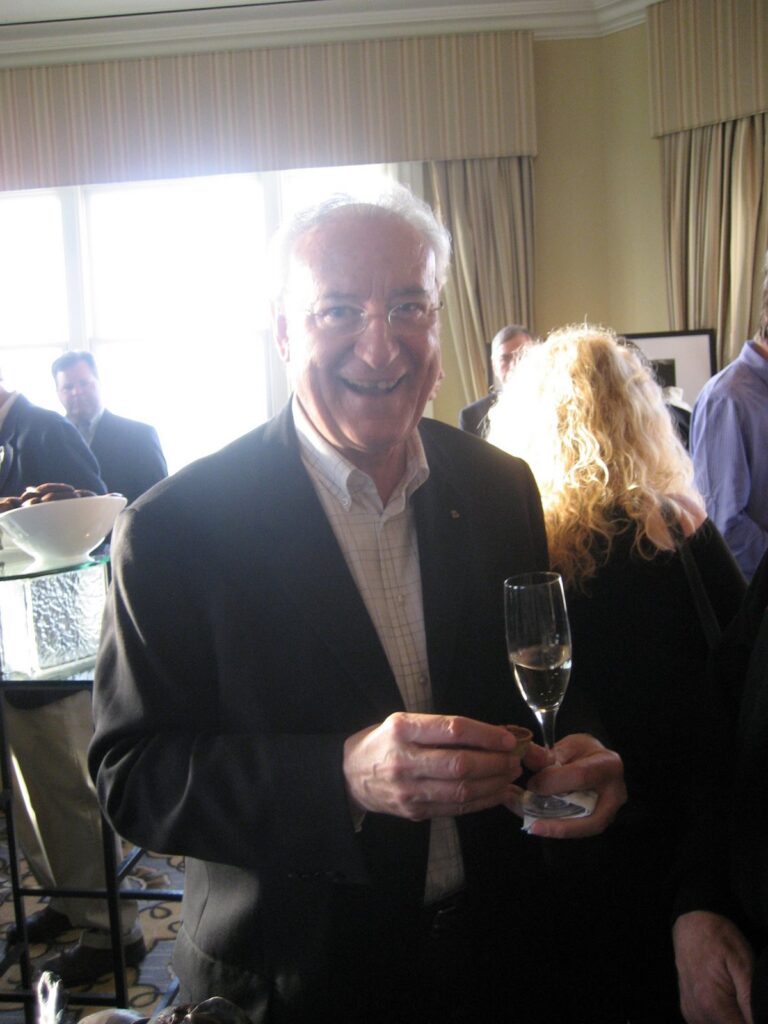
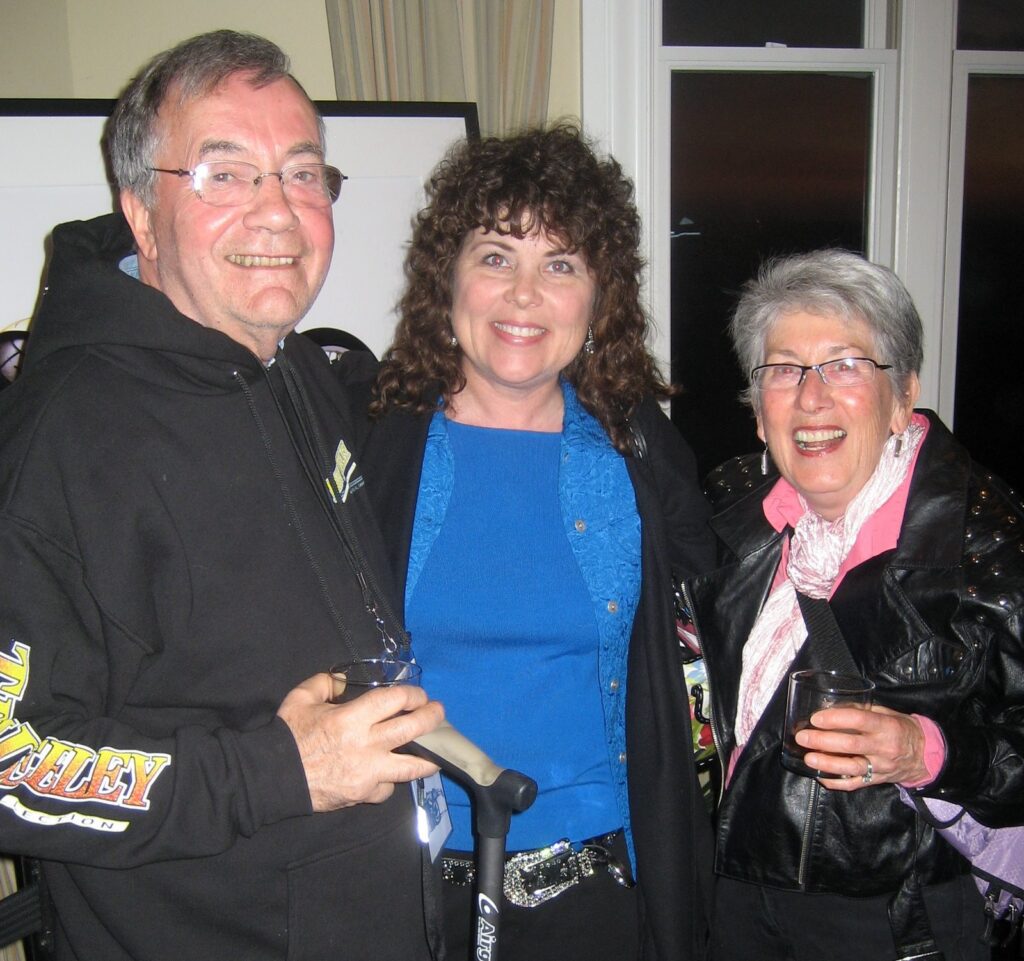
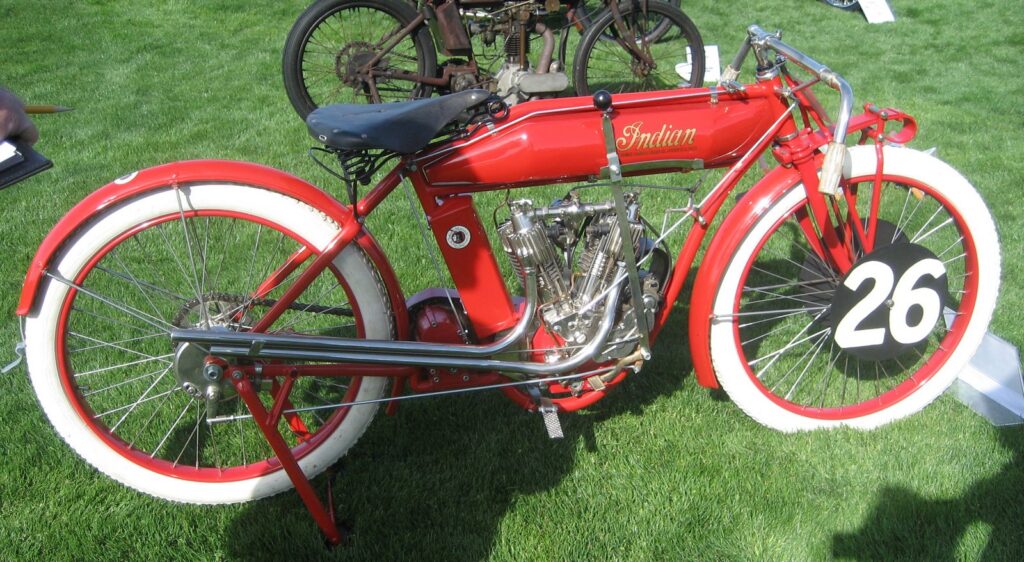
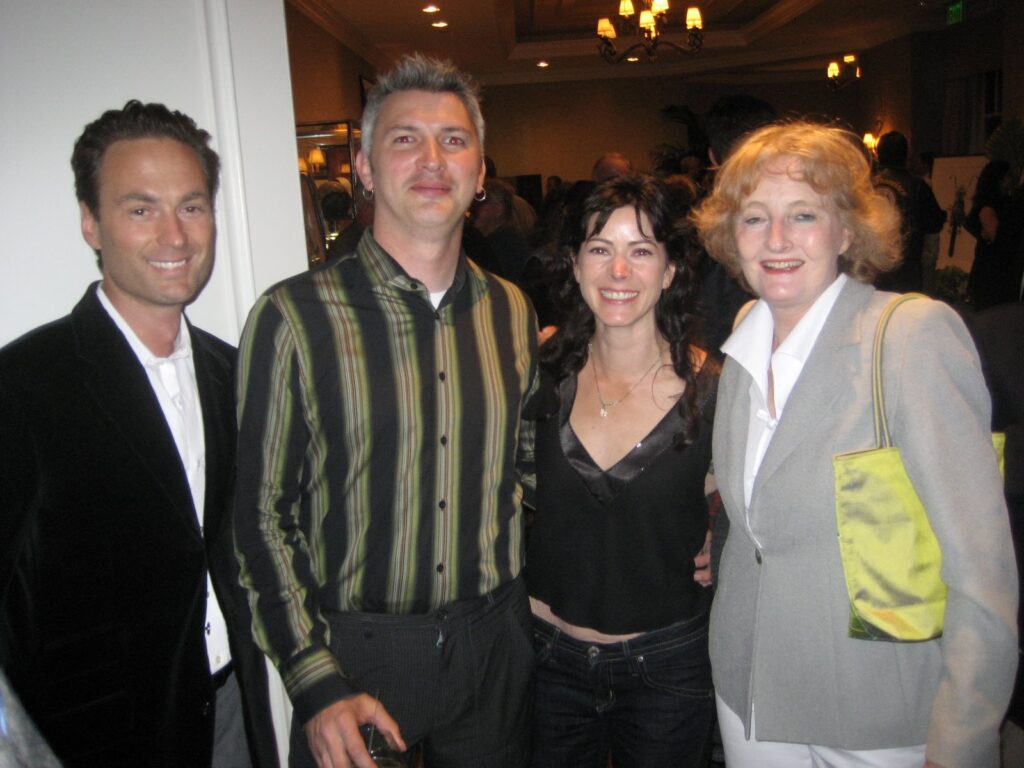
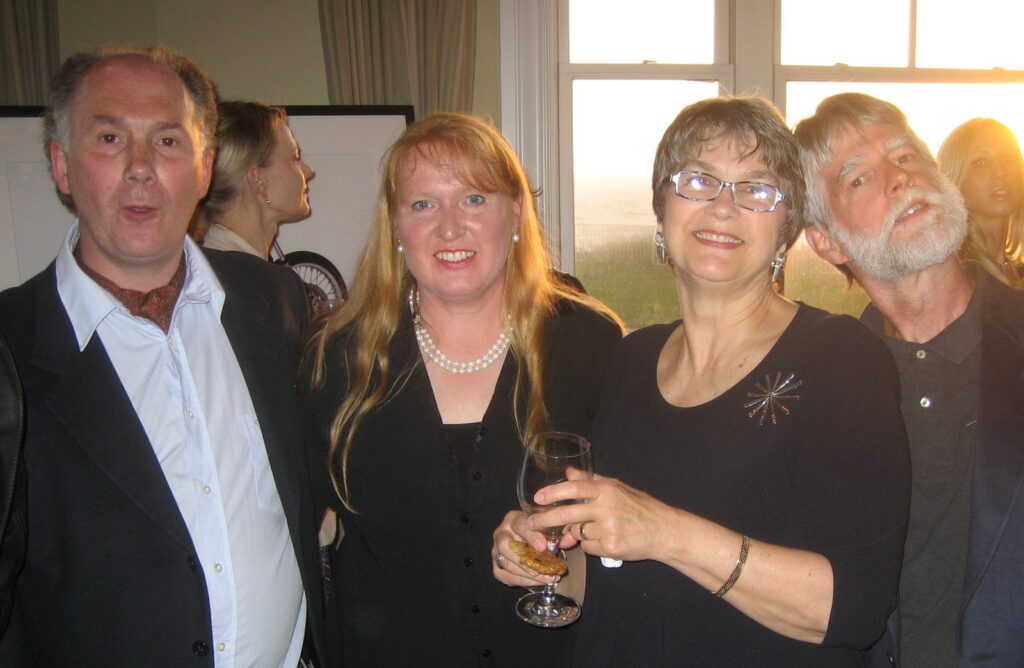
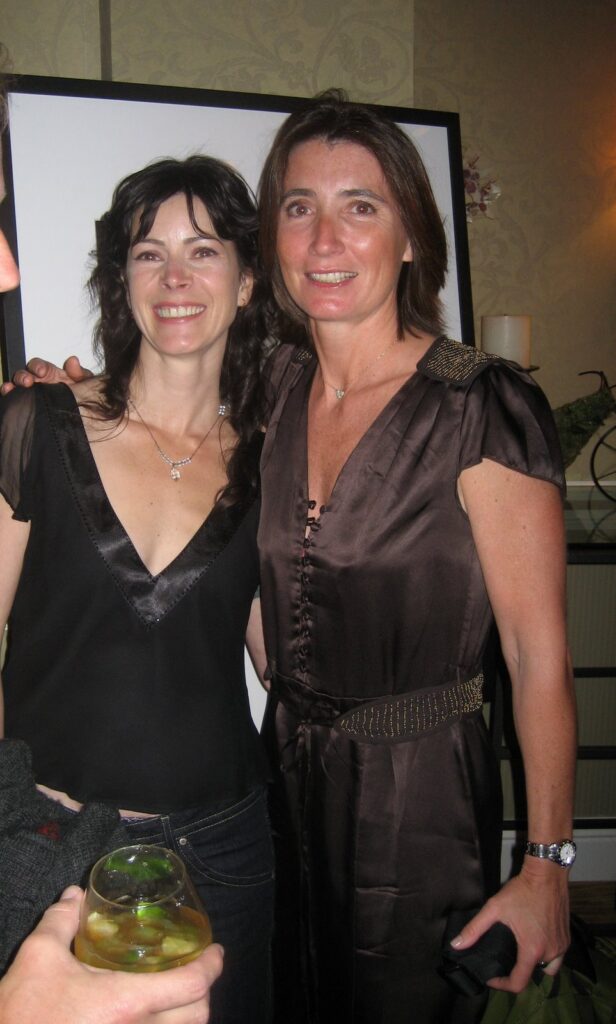
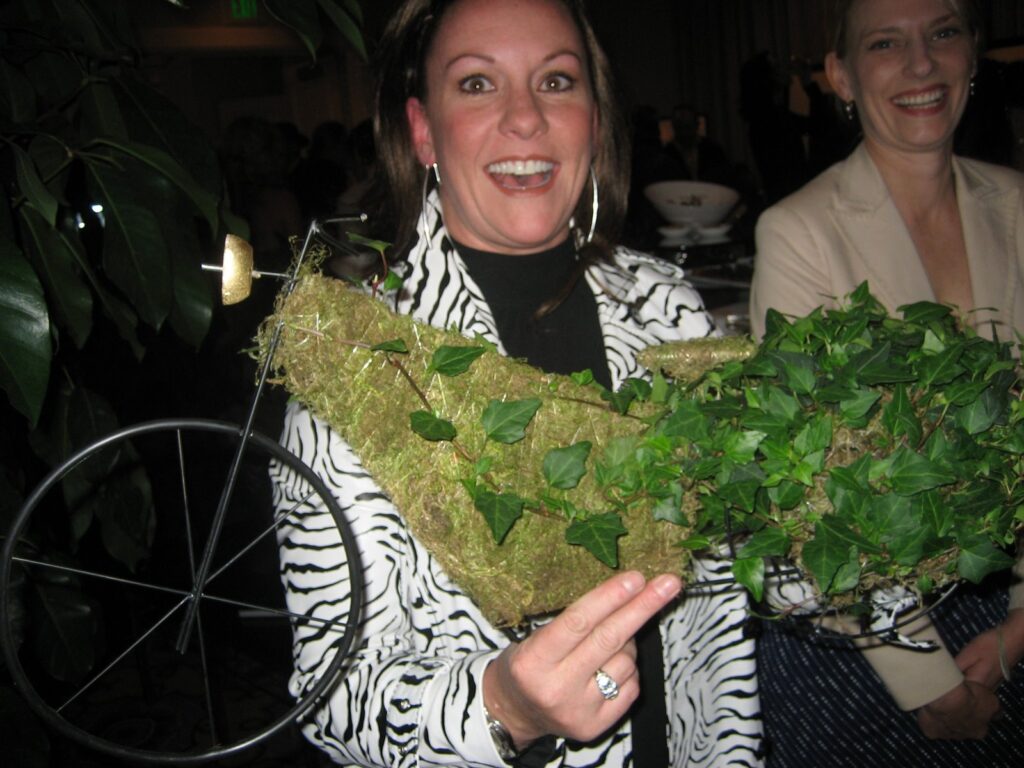

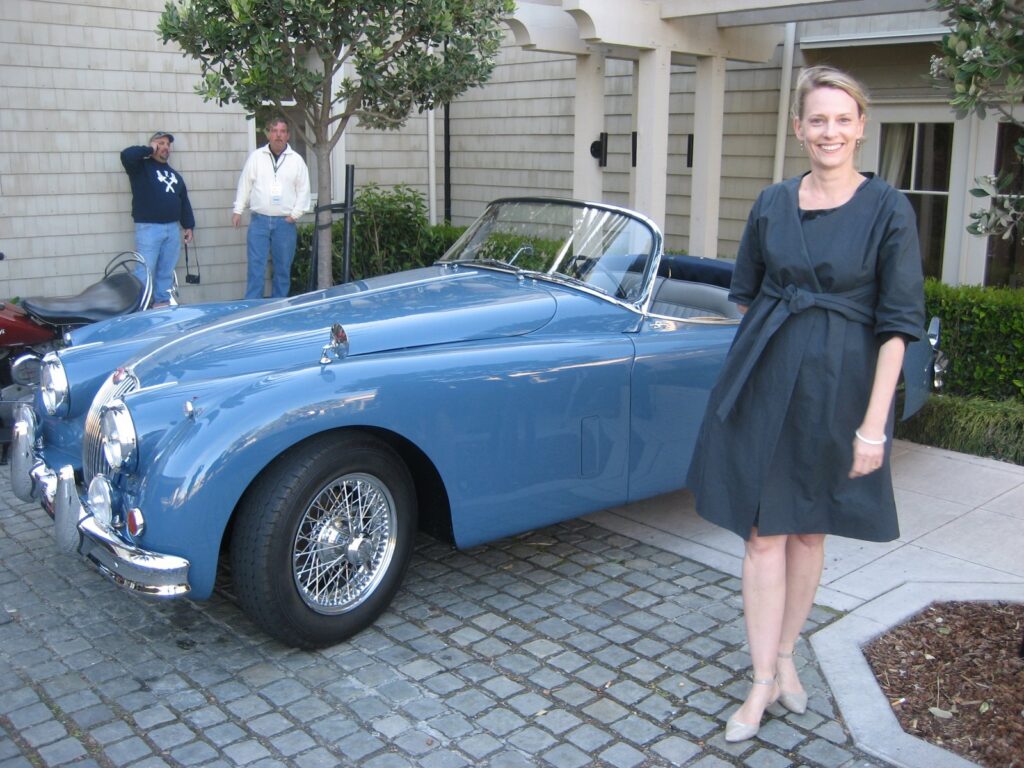

Don’t Trudge It, Rudge It!
A friend (thanks Pete!) forwarded an email from a collector in Australia who needed to lighten his garage a bit; mostly he had pre-1916 bikes which needed vast amounts of work to finish or complete. But, nestled amongst the Veteran Triumphs and Rudges was a proper Vintage (pre-1930 according to the VMCC) Rudge, which looked most intriguing. Of course, this was the bike he really didn't want to sell, but it attracted the most interest (it seems to be harder to sell the really old motorcycles nowadays, and the older collectors are passing on). I put in my bid, and the Rudge is headed to San Francisco.
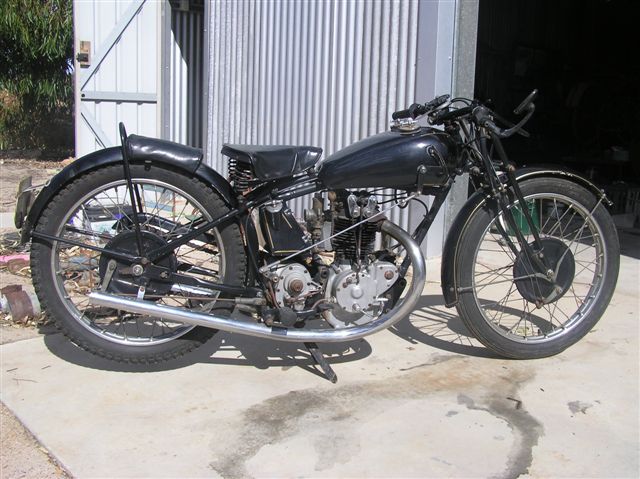
The bike in question is a 1929 Rudge Ulster, their pukka Racing Replica, and a faithful copy of Graham Walker's 1928 Rudge factory racer on which he won the Ulster TT at a 'world's first' road race average of 80mph. The factory wisely sought to capitalize on Graham's success by building a racer for sale, and the infamous Ulster model was born. Rudge carried on building Ulsters as their top-line motorcycle until they ceased building bikes at the onset of WW2, and like many a soldier, did not return after. The company did carry on though, but preferred to sell their wheel technology to automotive and motorcycle manufacturers, as they'd invented the splined knock-off wheel hub and the flanged aluminum rim for two and four wheels. Ever notice those Rudge wheels on a Mercedes Gull-Wing 300SL? Also, Borrani licensed the Rudge patent for flanged aluminum wheel rims, the first in the industry, introduced in the mid-1930s for both cars and motorcycles.
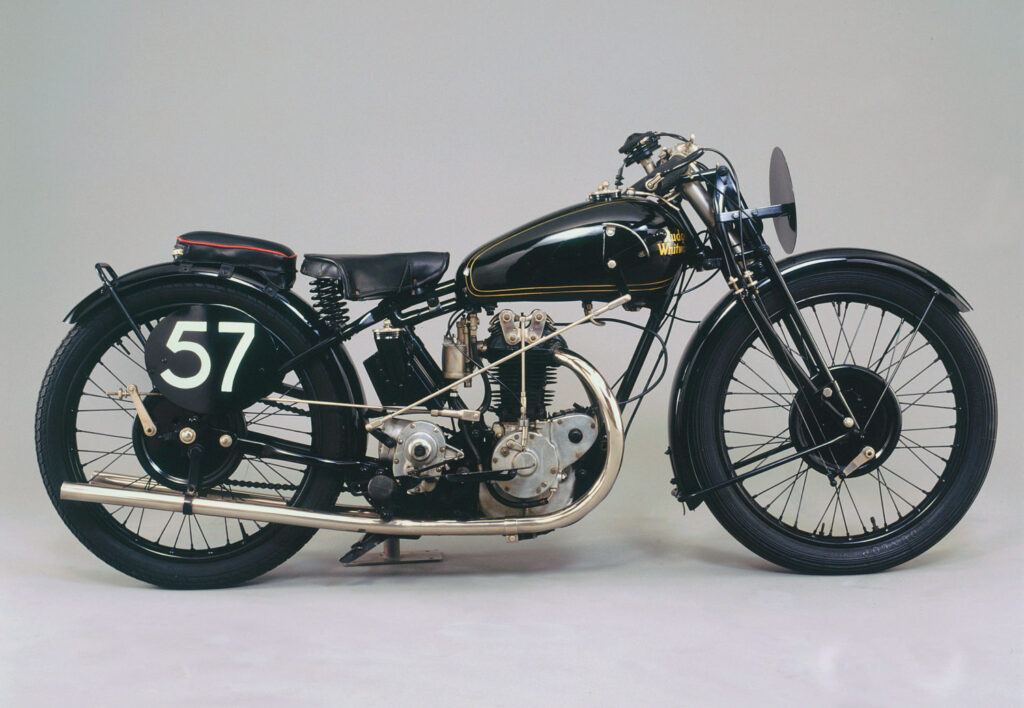
The first-year Rudge Ulster (1929) was a unique beast, and was essentially a one-year model. The 500cc single-cylinder pushrod engine had 4 valves and 33hp, and a four-speed gearbox, while the rest of the industry still contended with 3-speed boxes. Top speed was 105mph on an open exhaust pipe. The engine had a total-loss oiling system, meaning it had no oil pump per se, but rather an oil metering device, and the oil was allowed to burn off/drip out rather than being returned hot to the engine. 'A constant supply of clean oil' was the thought, but properly circulating oil really helps keep an engine cooler! There are other features of the bike which are unique to the year, such as the twin-filler gas and oil tanks and large diameter wheel rims (21" and 20" front and rear); the 8" drum brakes were the biggest in the motorcycle industry for many years.

Regarding the poster of Graham Walker's machine; the owner has it attached to his garage wall - a pinup! Let's hope the Ulster looks as good as the calendar girl when it arrives in the USA.


artoftime said...
Paul - it was such a pleasure to see your name over at the Sartorialist - I bought your 900GTS in something like 1990 - never forgot how cool you and Denise(?) were - rode the wheels off that bike, sold it, traded it back for a painting and now just looking it in mock up state. Don't quite know where to go with it...anyway, now into vintage cars and a painting career. Would love to catch up - you even in NYC?
Gregory Johnston
APRIL 01, 2007
vintagent said...
Hi Gregory, can't contact you via your artoftime handle for some reason; send me your email address! I was just in NYC, but will be back likely in early June. Send to vintagent1@aol.com
I was just thinking about 'ARTMS' when I was in NY actually, must have been psychic. What a great bike. If you want to sell it back, let me know. P
APRIL 11, 2007
Anonymous said...
Wonderful article, I own and ride a Rudge Special 500 1937. The bike is new to me, however, my father had a Rudge in his youth. I love vintage cars and motorcycles. Would you be able to recommend a source to acquire an owners manual and spare parts list?
Thanks
George Murphy
Mar 27 2007
2007 All-British Clubman's Show
The focus of this year's display was 'Racing Nortons', in honor of the significant history of these machines in the Isle of Man's centenary year. Top pic shows yours truly atop Paul Adam's '37 Norton Manx GP (they didn't call them 'Manx' until after WW2), which he had just finished restoring, and which was the finest machine present in my opinion. Paul's attention to detail is impressive, and I love the satin chrome finish on all the nuts and bolts - a difficult process to source these days, with environmental regulations on plating by-products (like hydrogen cyanide). Perhaps in the Sierra foothills where he lives, the EPA isn't paying as much attention.
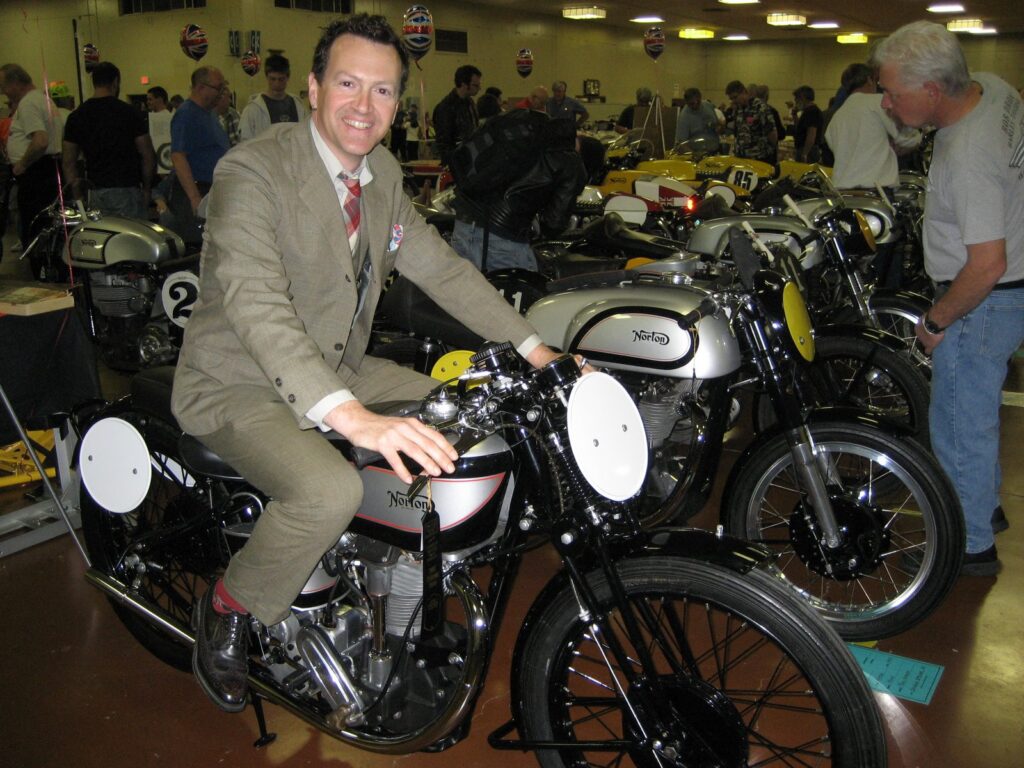
You might note that the engine has black crankcases, indicating that they're magnesium; these 'Manx GP' models were the first Nortons sold to the public with this ultra-light material. Previously, only factory racers used magnesium. I think Paul's bike is one of a handful of survivors of this particular model; I've only ever seen pix of two others. Note also straight exhaust pipe, not a megaphone.
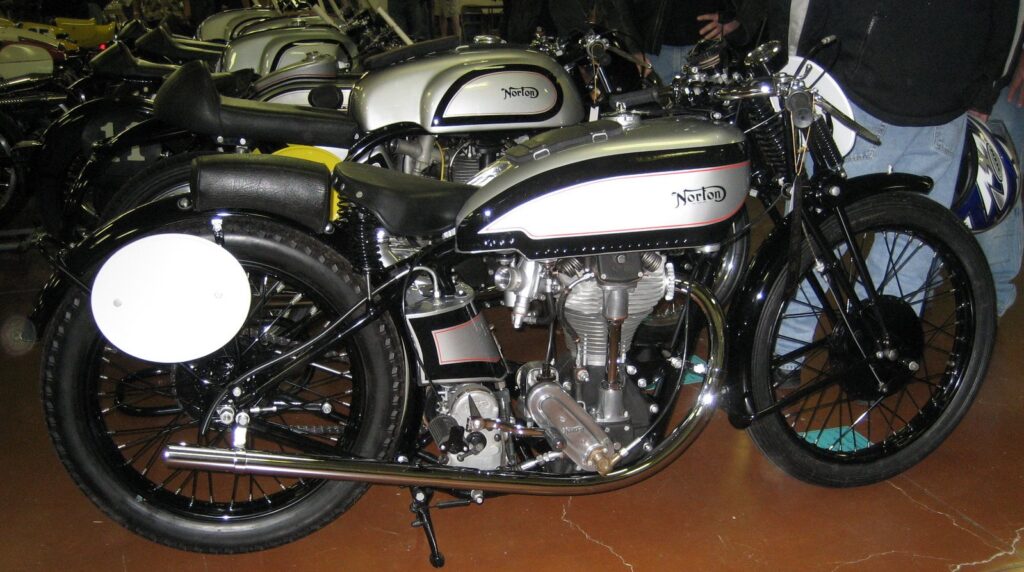
Pete Young and I were the judges of pre-war machines at the show, and awarded the Norton Best in this category. An impressive machine; even my suit is turning green in the photo! The display of Nortons was perhaps the best 'featured marque' display ever seen at the Clubman's Show, with over 20 compelling racing Nortons, ranging from my 1925 Model 18 racer to 70s Commando production racers. Kudos to the show organizers for bringing such a diverse lot together. Bottom pic shows a couple of attendees in their Rocker finest, admiring a speedway machine with Triumph Tiger Cub engine. There was a great crowd at the show, quite a few Rockers in fact, and I managed to pick up a whole load of Velocette spares for my projects.


Then and Now
The evocative sepia photo shows Graeme Browne racing his '25 TT Douglas at the Brooklands speed bowl. The color photos below show the same bike at Brooklands, where it now lives in the Museum, still in original condition, after being left to the museum by Mr Browne himself, who retained ownership throughout his life. A remarkable partnership, by any standard.
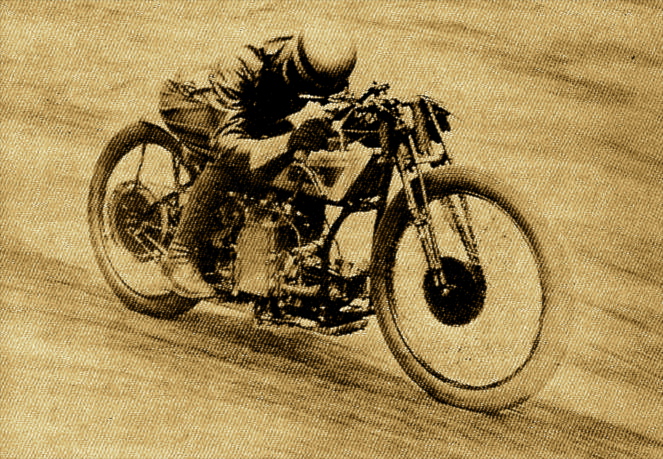
The Douglas is very interesting, at it was purpose-built by Graeme Brown for competitions and record attempts at Brooklands, using a 1926 TT frame with a 1928 499cc OHV special long stroke engine, and has a cast aluminum sump beneath the engine, and a proper oil pump circulating the oil under pressure. Only the pukka works racing Dougies had this feature; otherwise the bike looks fairly standard compared to, say, my own prosaic machines! A look at the engine close-up reveals the fins of the sump beneath the engine, and an oil pressure gauge on top of the airbox (another unique feature of the Douglas, added by Freddie Dixon). The oil pump proper is visible at the center of the sump; it's driven by a shaft-and- bevel arrangement inside the airbox.
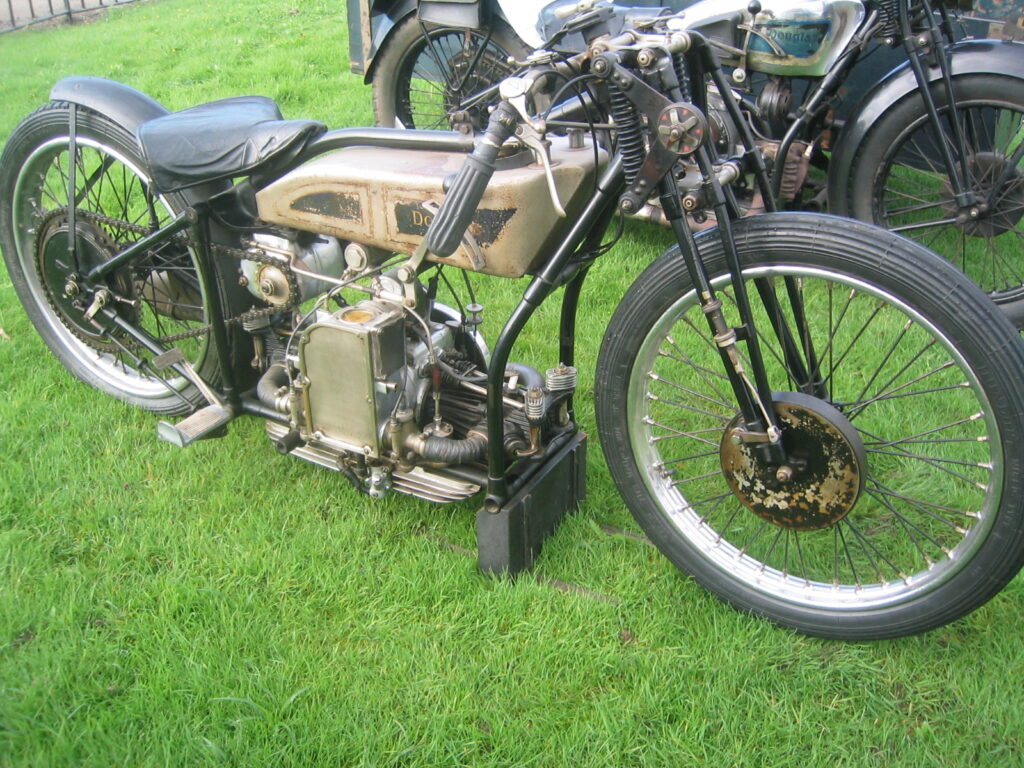
The induction manifolds are wrapped with friction tape to keep them from freezing up when alcohol fuel is used. The engine never gets particularly warm when using alcohol, as it burns much cooler than gasoline. If the manifolds freeze, the carbs can freeze as well and jam the throttle wide open during a race - exciting but best avoided. I experienced manifold frost on the road-test BMW R63 mentioned in an earlier post; the pipes were almost a foot long, and gained a haze of moisture as on a cold drink, almost immediately after starting the engine.
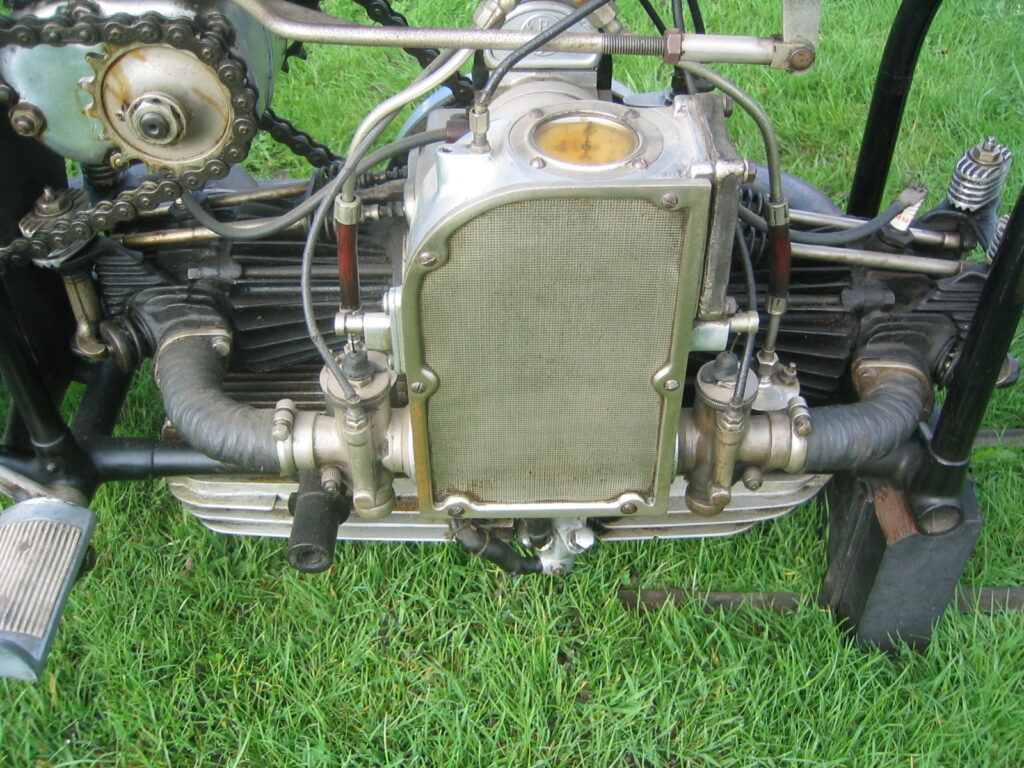
From the Brooklands Museum: "Graeme Brown [1903-1996], long-time President of the London Douglas MCC, was a lifelong Douglas enthusiast, owning his first in 1923. Aged 23, he opened a motorcycle business in Godalming, as Surrey agent for Douglas. He raced at Brooklands from 1924 to 1935, winning the Essex Cup in 1925 and the J.A. Prestwich Cup in 1932. When manufacture of Douglas motorcycles ceased in 1957, he bought up the factory spares, and continued supplying these on a world-wide basis." A fascinating machine and fellow!

More Vintage Racing Douglas
Not much is heard these days about Douglas motorcycles of Bristol, UK, but for two decades their motorcycles were ranked among the best and fastest on the planet. Especially in the in the 1920s, Douglas racing machinery was among the most innovative in the world. They built the first 500cc motorcycle to record 100mph in the UK (1921), won many Isle of Man TT's, and developed the first disc brakes. Shown in the photo below are two Douglas 'RA' racing models, after a race on a banked circuit. The 'RA' was so named after the Research Association, a group attempting to advance motorcycle technical development, and which created the disc brakes on these two machines. Hydraulic calipers, as used today on discs, weren't developed yet (not until the late 1930s), so these used mechanical leverage with a steel 'shoe' that pressed onto the v-shaped disc, which was made of friction material - the opposite of today. Still, they were much better brakes than the 'dummy rim' type on most British and European motorcycles of the day - basically a flimsy secondary wheel rim attached to the spokes, onto which a shoe of friction material is pressed (a design cribbed from horse-drawn carriages!).

These RAs would have run on alcohol, and in full flight would have probably hit 110 mph; this is 1924. Amazingly, similar 1920s racing Douggies are still used in competition today, albeit in vintage sprint meetings, where they win regularly against bikes from the 1960s and 70s, pulling 1/4 mile times in the 11sec. range. As a side note, I love the old one-marque sweaters which were fashionable in the 'Teens and Twenties, probably knit by a sympathetic mother. If you look closely at the lettering on the right rear mechanic, it's a different font from all the other 'Douglas'. Also, the American rider is wearing a football helmet, which was a common sight on board track and dirt track racing in the USA.

Excelsior! The Silver Comet
Excelsior! Fastest arse in the world! This is the 'Silver Comet', prepared by Claude Temple to take the world speed record in 1931, with a supercharged 1000cc ohv JAP JTOR engine. Fast as it looked, it wouldn't break 170mph, so was retired... but what a looker.
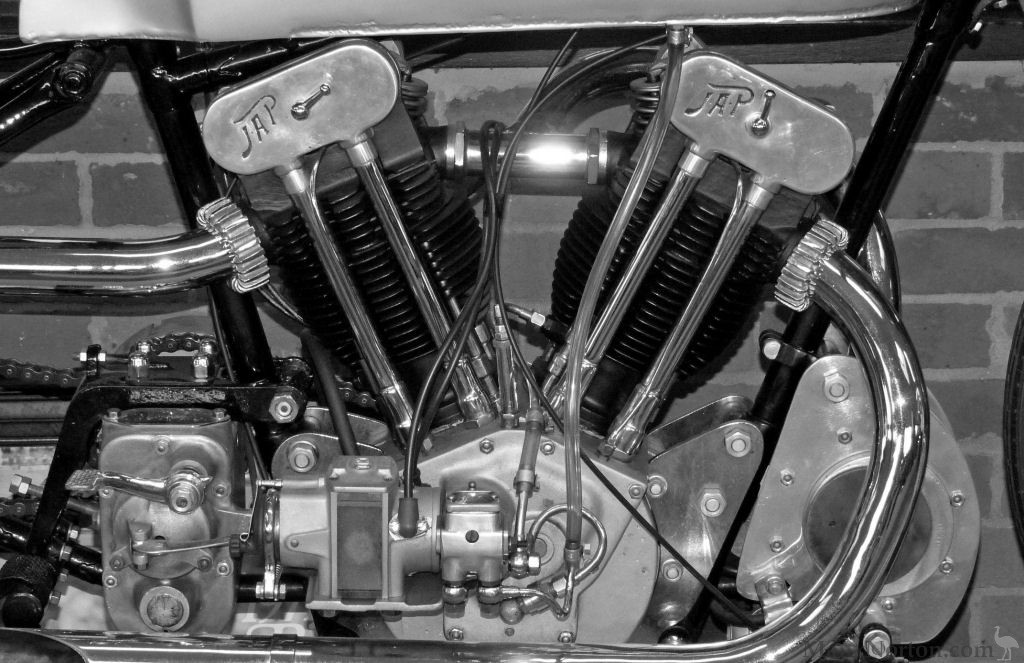
For the tech-minded, the engine put out 100hp at 15psi blower pressure, at which point the blower was absorbing 15hp. It drove thru a 2 speed Burman gearbox built to withstand 120hp. Fuel consumption estimated at 5mpg, oil at 50mpg, using four oil pumps to liberally coat the machine for greater speed (oh all right). Paxon flexible saddle! All that power was controlled by a single lever on the handlebar, not a twistgrip throttle. One little finger controlling 100hp.
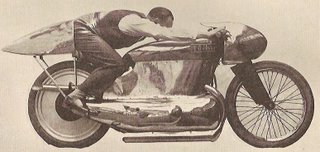
You'll note rider Joe Wright on the Paxon flexible saddle has simply taken off his suit coat, and is still wearing the vest from his 3-piece and shiny street brogues. Wright took this machine to 163mph at Tat, Hungary in 1930, but 170mph was the goal.

Those Dapper Racers of the 1920s: Vivian Prestwich
Here we have John Vivian Prestwich, heir to the famous J.A.P.(John Alfred Prestwich) engine manufacturing company, looking natty on a 250cc Diamond motorcycle. Motive power is supplied by his family product, a side-valve J.A.P. engine with a total loss oiling system. The photograph below was taken Nov 23, 1920, and his little machine recorded 62.39mph at the Brooklands speed bowl, an impressive figure for a little flathead engine of the day, and a new speed record for the 250cc class. If you click on the photo, you might make out the lovely cursive 'Diamond' script on the tank. The little bike is pared down to the absolute minimum, with the countershaft sprocket and engine plates drilled within an inch of their life, no fenders, and handlebars dropped almost to the top of the motor. Note the finned 'fir cone' valve caps on the motor. The visible levers on the handlebar are for a decompressor and ignition timing advance, and the other 'bar would be the throttle lever. No other controls are present or required, as there are no gears or brakes on this special record-breaker. Prestwich's feat would have earned them bragging rights in advertisements for J.A.P. and Diamond, as well as the oil and fuel and tires and chains they used, as was typical of the sponsorship games then as now. Nothing so crude as stickering up this lovely racer with logos, although Vivian is not above wearing the company logo!

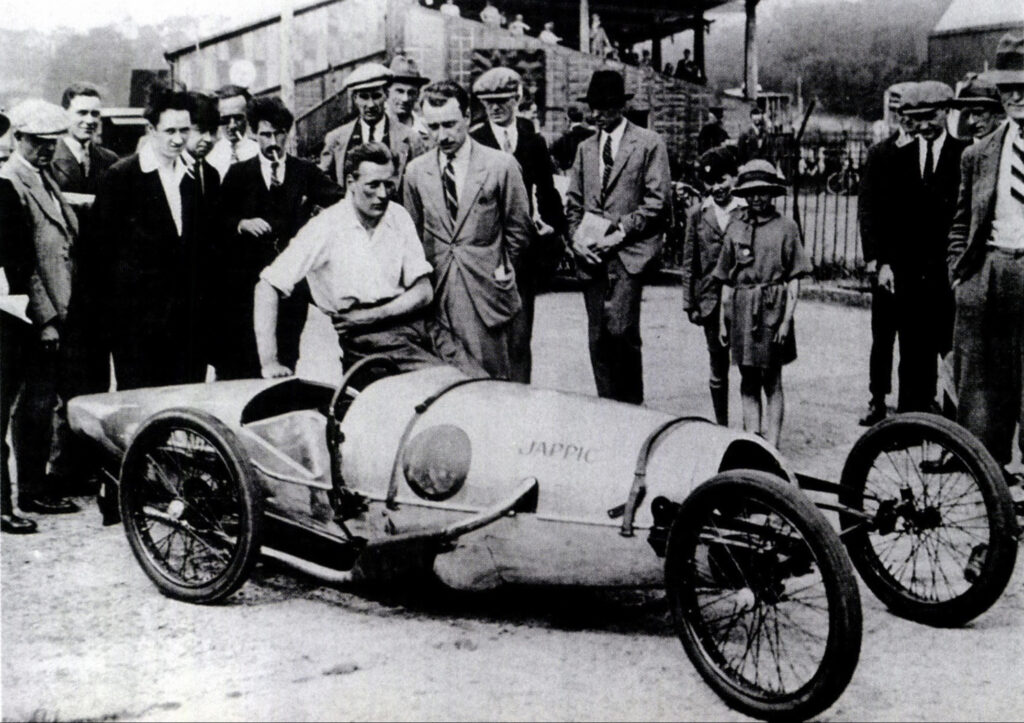

The Diamond Story
Diamond motorcycles emerged from bicycle manufacturer D.H.&S., based in Sedgley Street, Wolverhampton, England, who produced Diamond Cycles. They were named for the now-ubiquitous 'diamond' frame design patented by James Starley in 1885 as the Safety bicycle, with its equal-sized wheels. Diamond Cycles were high-quality bicycles, and sold well. Beginning in 1908 the company added Diamond motorcycles to their sales list, using Belgian F.N. singles and v-twin engines, and the company was reorganized with new investors as D.F.&M. (Dorset, Ford & Mee) Engineering Co Ltd. The J.A.P. connection began in 1912 with a 2 3/4hp model (250cc) using a sidevalve motor and two-speed gearbox. Production paused between 1916-1920, and Vivian Prestwich's ride was something of a reintroduction of the Diamond marque to the marketplace: a splash of much-needed publicity. Diamond supported racing at Brooklands and at the Isle of Man TT through 1933, when the company ceased motorcycle production.
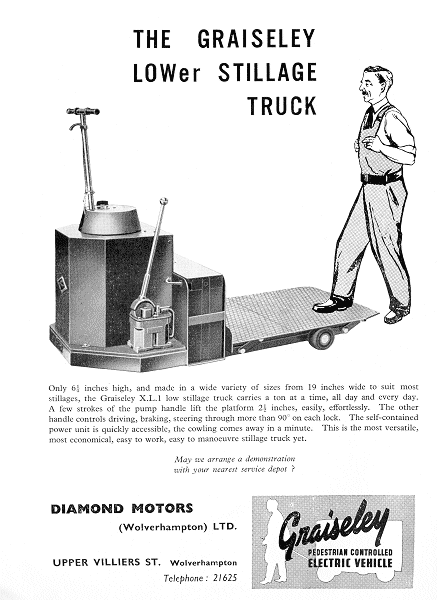
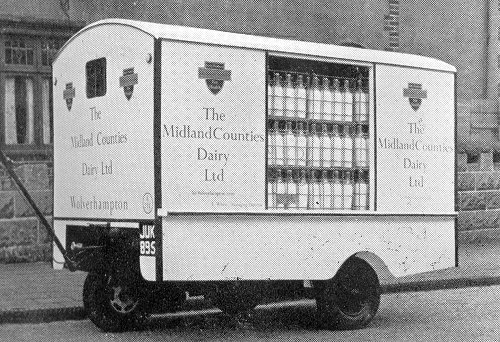

Those Dashing Racers of the 1920s: George Brough
This is the grandaddy sartorialist sportsman in all of motorcycling; George Brough. He's photographed here on his own creation, the famous Brough-Superior derisively called 'Spit & Polish', so-called because of the always-immaculate finish he kept, but George called it 'Old Bill' after the WW1 comic book character. His racer was the prototype of the upcoming Super Sports 80 (SS80) model he would introduce in 1922, only three years after commencing production in 1919 using J.A.P. '90 Bore' and Motosacoche engines. Old Bill used a newly-introduced J.A.P. sidevalve racing engine of 980cc, on which George and his development team (Harold 'Oily' Karslake and Ike Webb) worked considerable magic. The flywheels were lightened down to their outer rims and a single 'spoke' connecting the main bearings to the flywheel rims. It was the first sidevalve-powered motorcycle to clock 100mph in competition.
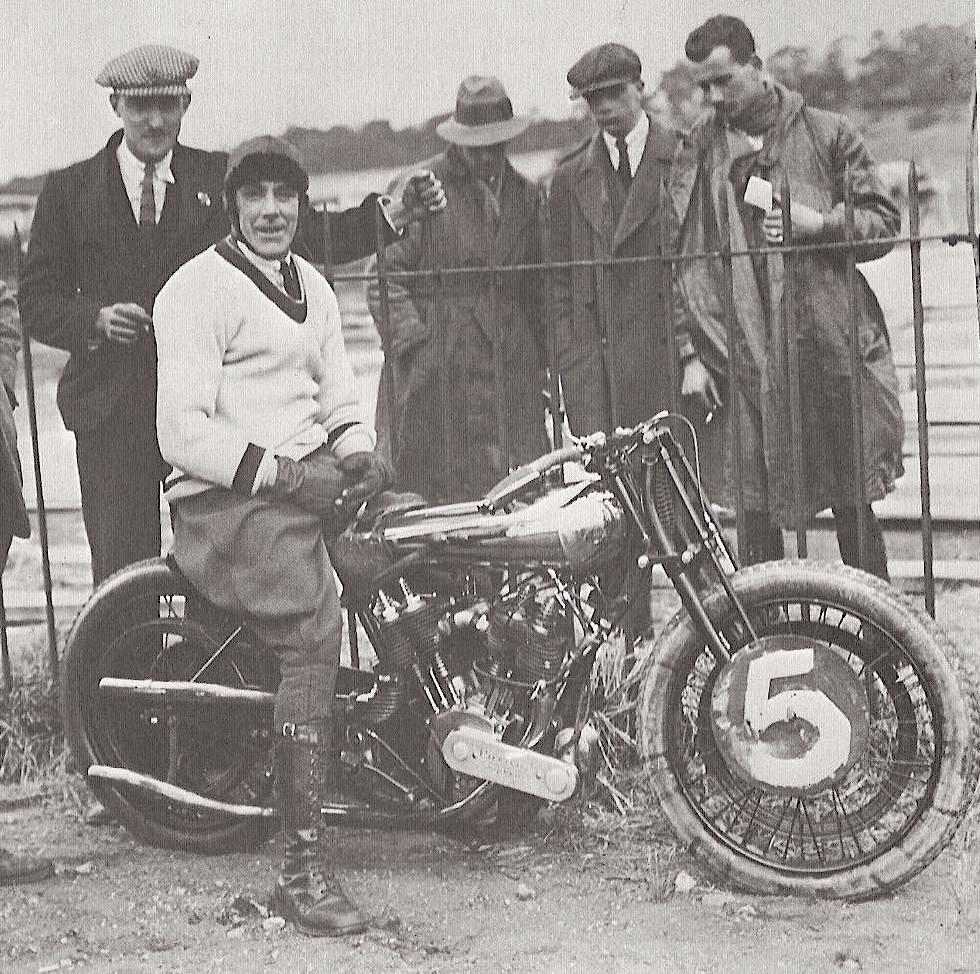
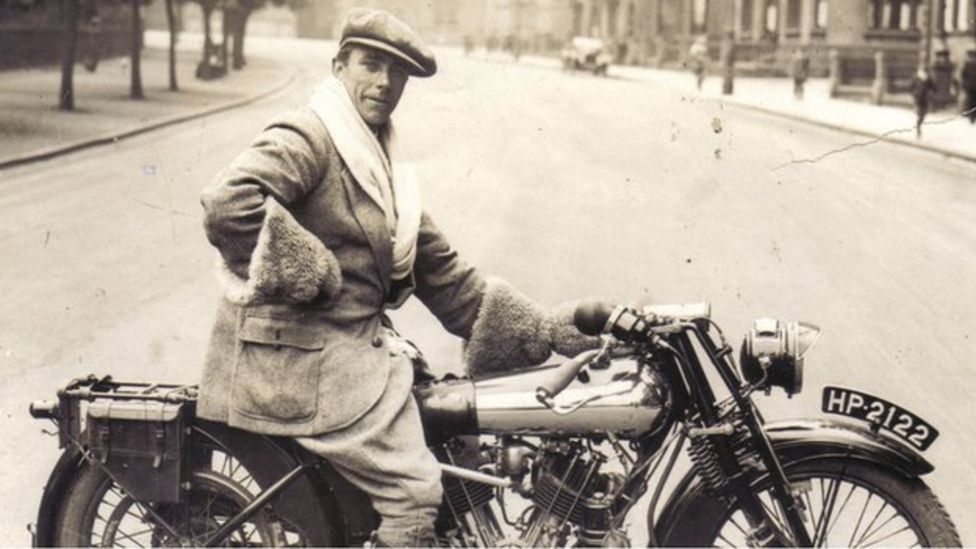

1967 Velocette Clubman Veeline
The 1967 Velocette Venom Clubman Veeline - what a mouthful for what is an absolutely gorgeous machine. This one lives in Australia, where I met it in 2004, and it ran as well as it looked. This is just about my favorite configuration of Velocette, barring the MkVIII KTT racer. The Venom Veeline has a grace of line that even the Velocette Thruxton with a nose-cone fairing lacks. Doug Michenall, owner of Avon Fairings, created the mould for this line of fiberglass wind-cheaters specifically for Velocettes, and it shows. I have seen slimline Nortons use the same item, which looks great as well.
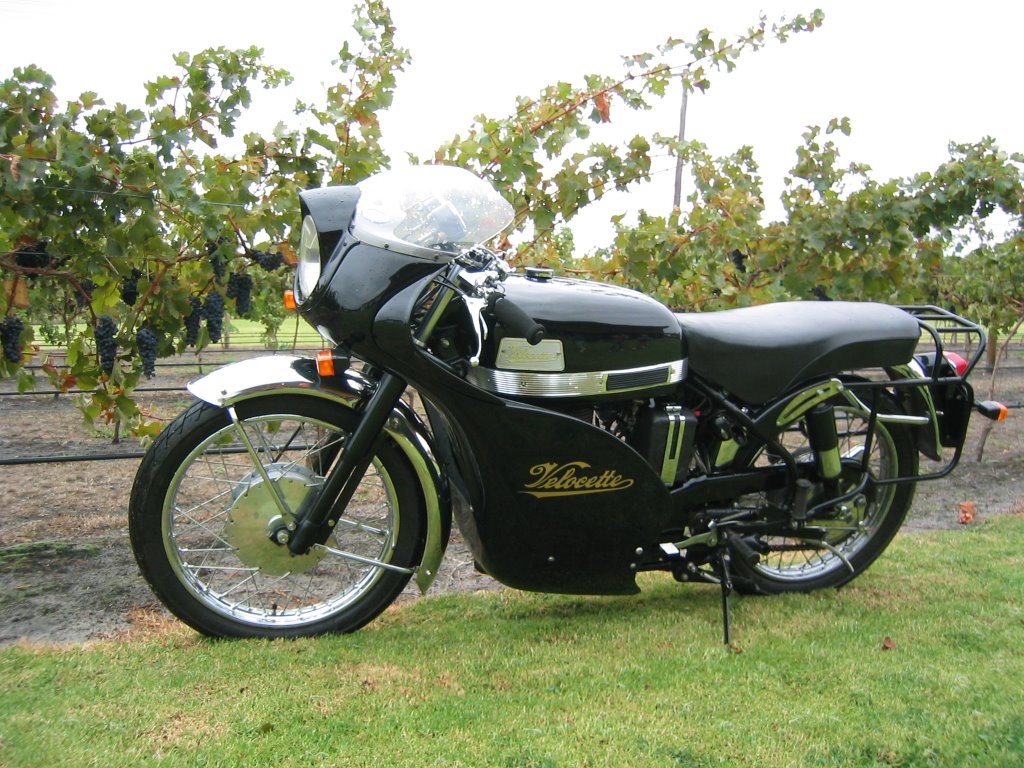
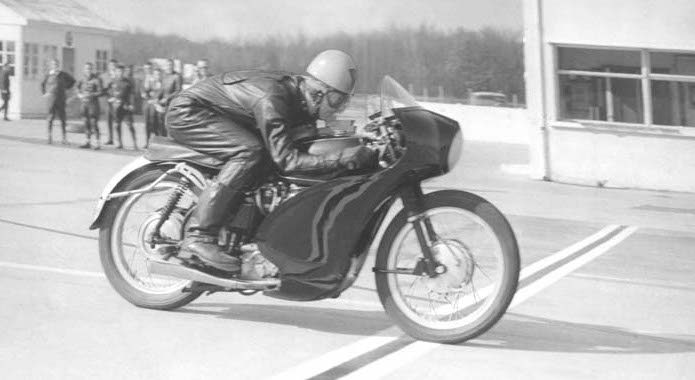
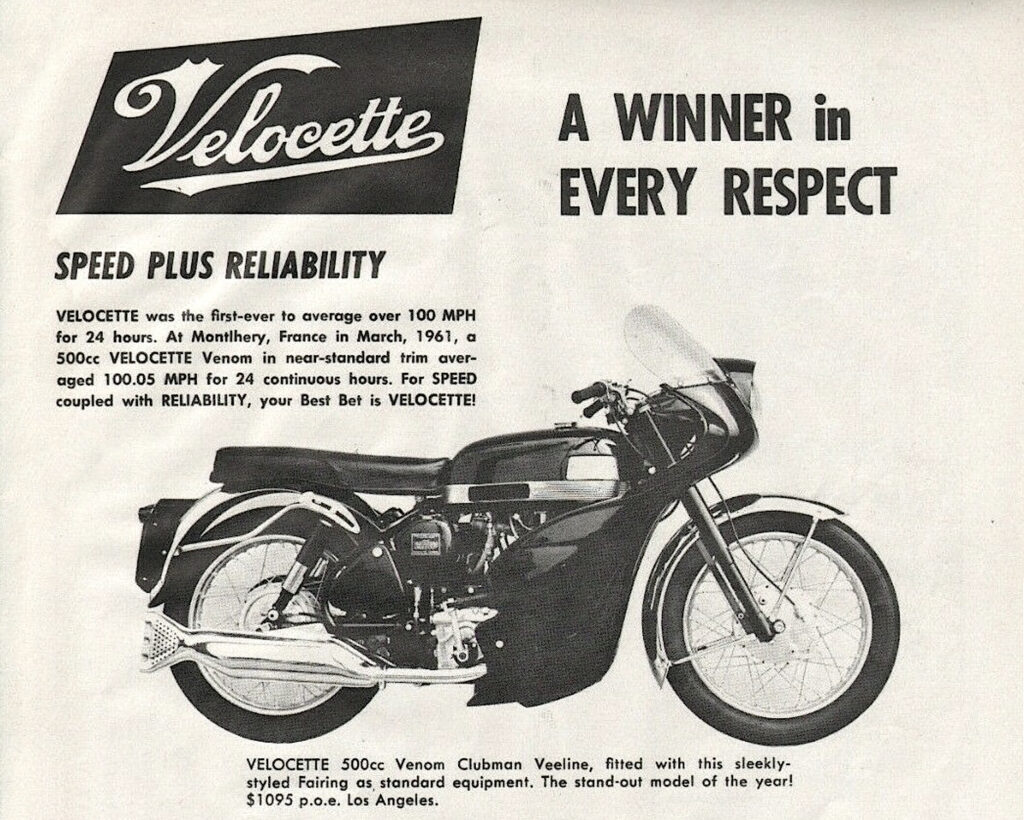

Road Signs in Australia
This was the view from the 1965 Velocette Thruxton I borrowed from John Jennings for the Australian Velocette Owners Club Rally in Sydney, October 2005. The winding road was somewhere in the midst of the Blue Mountains, a couple of hours outside Sydney, as the rally HQ was Richmond NSW. The VOCA began holding their week-long 'Good Companions' rally in 2003, at Margaret River WA, which I was lucky to attend. It was indeed an adventure, as Western Australia has a very low population density, with 90% of its population in Perth, and a whole lot of unpopulated bush for 1000 miles around it. As I tend to ride alone and explore whatever catches my fancy, I went 40km 'off piste' to explore a row of old-growth Kerri trees that had been made into a park. On finishing my lunch and taking some photos, I found my borrowed (from John Jennings again!) Velocette Clubman had no compression. I had enough tools with me to determine a valve seat had dropped, which is very unusual, and not repairable by the side of the road. Lucky for me, a bush mechanic happened along the otherwise deserted dirt road, gave me a ride to a house with a phone, and I was able to call ahead to our evening's rally stop for some roadside assistance. My reputation as a hotrod preceded me, and I was castigated Aussie-style for breaking the Clubman, but of course I was simply puttering along a dirt road for the prior 40km. Turned out the valve seats had been recently installed by an expert...but one never forgets the hard looks and hard feelings of the blamers. John, of course, understood, and we carried on loaning each other our bikes for many years on rallies in the USA and Australia.


C.T. Ashby's Zenith Racer
C.T. Ashby on his Zenith, Brooklands 1925. Zenith motorcycles held more over-100mph lap times at the Brooklands track than any other make, and the competition machines were personally supervised by Freddie Barnes, owner of Zenith. The bike is stripped down to the essentials, with a big pillow strapped to the tank for rider comfort on the notoriously bumpy Brooklands bowl. The crucial components; big 1000cc JAP OHV engine, Harley-Davidson forks with an Andre bump damper, 'square' ML magneto at the front of the engine, two big fishtail mufflers poking beyond the rear wheel, 21" wheels front and rear, and a dummy rim rear brake. Ashby, always a practical rider, is wearing a turtleneck sweater under his collarless leathers, and what looks like a kidney belt to help with the pounding he must have received while doing 110mph. I owned a similar machine - Super Kim - which I'll show in a future post.
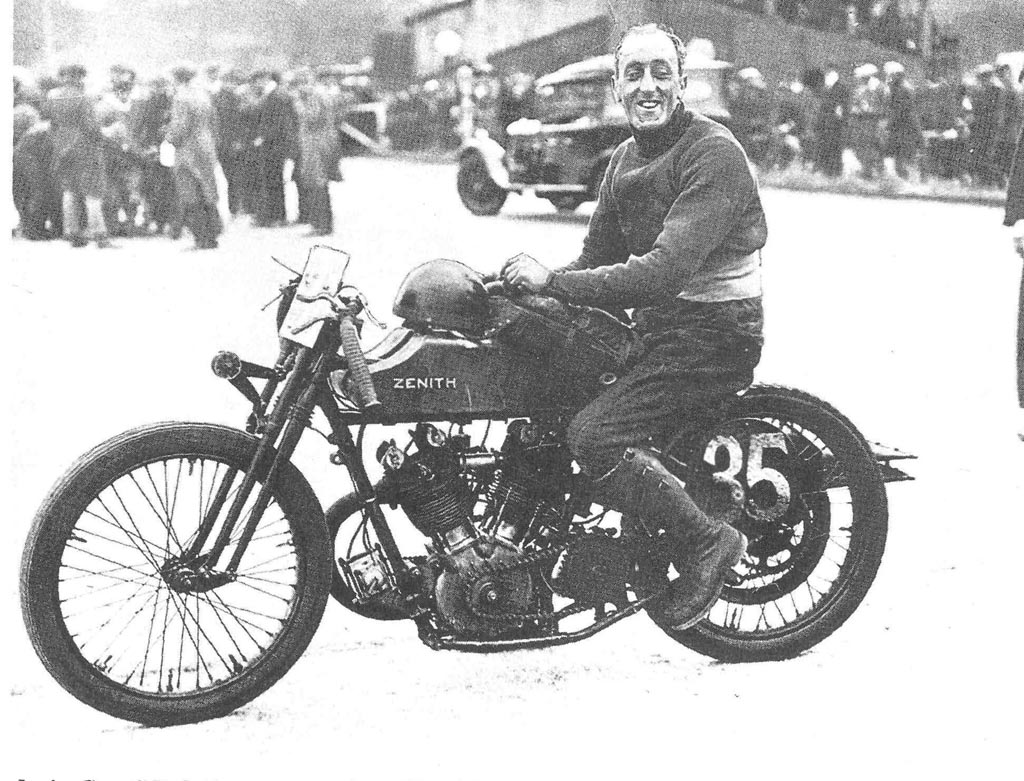
Trouble on Highway 1
The consolation of bike trouble on Highway 1 is the view. This is Chris Potempa on an AMCA club ride in 2003, working on his 1934 Indian Chief that was having multiple 'issues' on the day, including shedding the rivets which held on the rear brake drum. That fix took a trip to the hardware store, which luckily was only 10 miles away, and we managed to squeeze some bolts into the rivet holes for the trip home. Chris has since sold the bike!
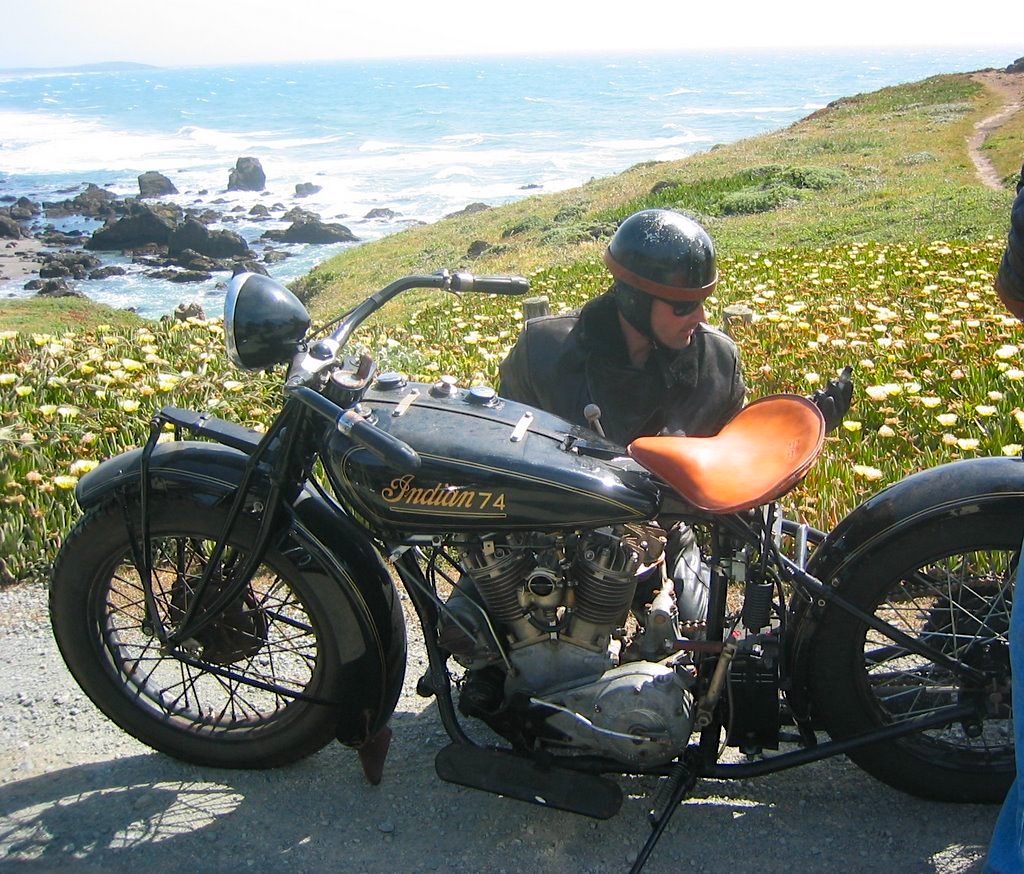

Cec Weatherby at the 1933 Isle of Man Junior TT
This is 'Cec' Weatherby, from Australia, about to start in the 1933 Junior TT, on his '33 Velocette MkIV KTT. Dennis Quinlan sent this from his archives in Sydney; clear photos of rigid-frame Velocette racers in the IOM TT are rare, even though they figured highly in the results. The other makes visible in the photo are Norton and Rudge; Rudge had won its last TT in 1930, and a pushrod-engine machine would never win again. Nortons, though, won this race and many others to come! Visible on top of the scoreboard are the Boy Scouts who updated the rider positions during the race. One 'bobby' (a sergeant by the looks of it) stands by to keep order, and the race team sponsors/owners are wearing their tweed suits and ties.
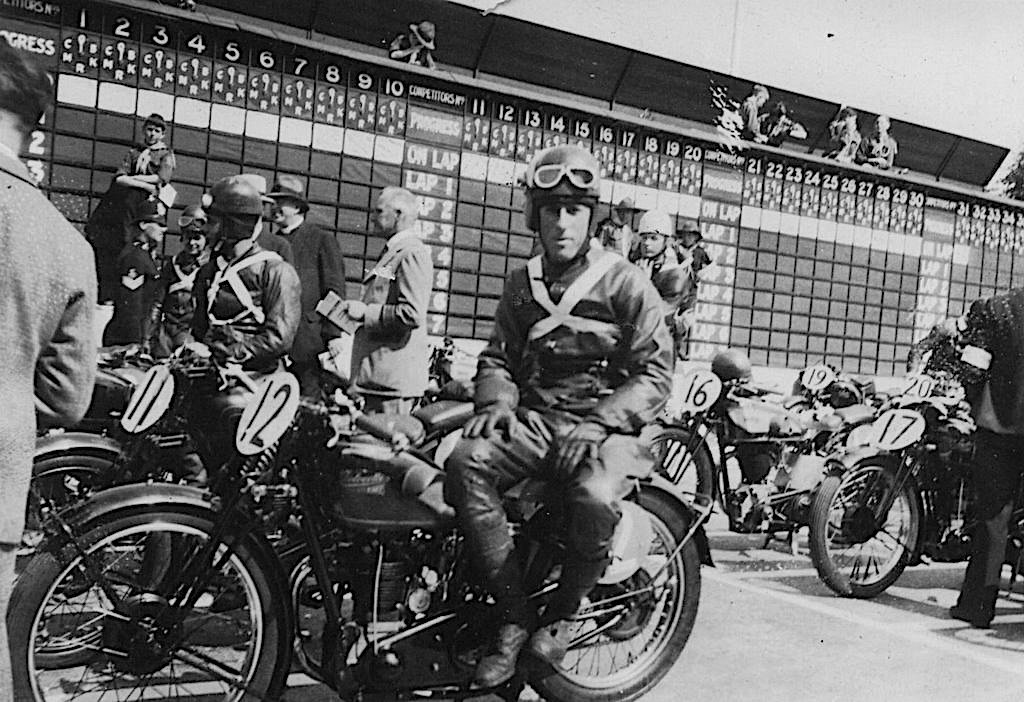
Racing riders are wearing baggy leather separates, as one-piece racing suits weren't common until the early 50's; they wear double-breasted button-up short jackets with high-waisted jodhpurs and suspenders underneath. Some of the riders wore shirts and ties, but Sartorialism was on the wane for motorcyclists by the mid-30's. Brooklands riders kept their neckties until the war, with 'Barry' Baragwanath keeping his detachable collar and bowtie until the end of his career - how charmingly old fashioned.
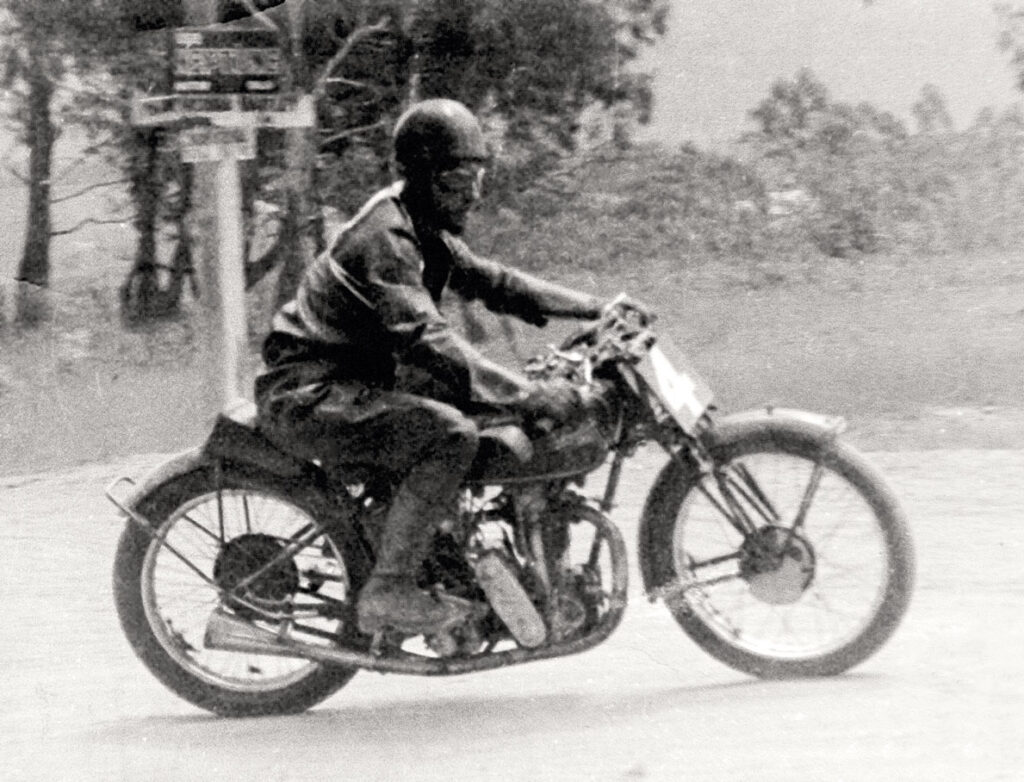
The Velocette MkIV KTT was a production racer produced from 1933-35, and was the first substantial revamp of the KTT line, introduced in 1928. Many riders did well on the MkIV, winning Grands Prix and TTs around the world, and many Gold Stars at Brooklands for turning 100mph+ laps during a race, which is significant for a 350cc machine [see our article on David Vincent's Gold Star ride on a Velo here]. The KTT line evolved in 1935 with the MkV, which used the same full-cradle frame as the new KSS roadster, and the aluminum cylinder head of the KSS as well: it was not as successful as the MkIV, being heavier and a little slower. The MkVI that followed was a strictly limited production for selected riders, and the subject of much speculation - read our story here. The KTT MkVII was a brilliant machine with a wholly new all-alloy engine, and a revised frame geometry based on feedback from Stanley Woods. The MkVIII KTT was the ultimate of the KTT line, built from 1938-50, using the world's first swingarm rear suspension with separate shock units, as we see on most motorcycles to this day. The MkVIII was the swansong of the KTT line, and the most successful of all.

2006 All-British Ride
The 150 bikes attending the 13th annual All-British Ride ranged in age from Pete Young's 1914 Premier to brand-new Triumph Rocket 3's. The BSA club has taken over management of this event from Don Danmeier, who previously held the event as his annual 50th birthday party: perhaps the joke became untenable after ten years! Volunteers staffed the sign-up table at our meeting point in downtown Novato. The ride cost $15, which included a back-up vehicle and lunch stop at the ride's end, the Cheese Factory.
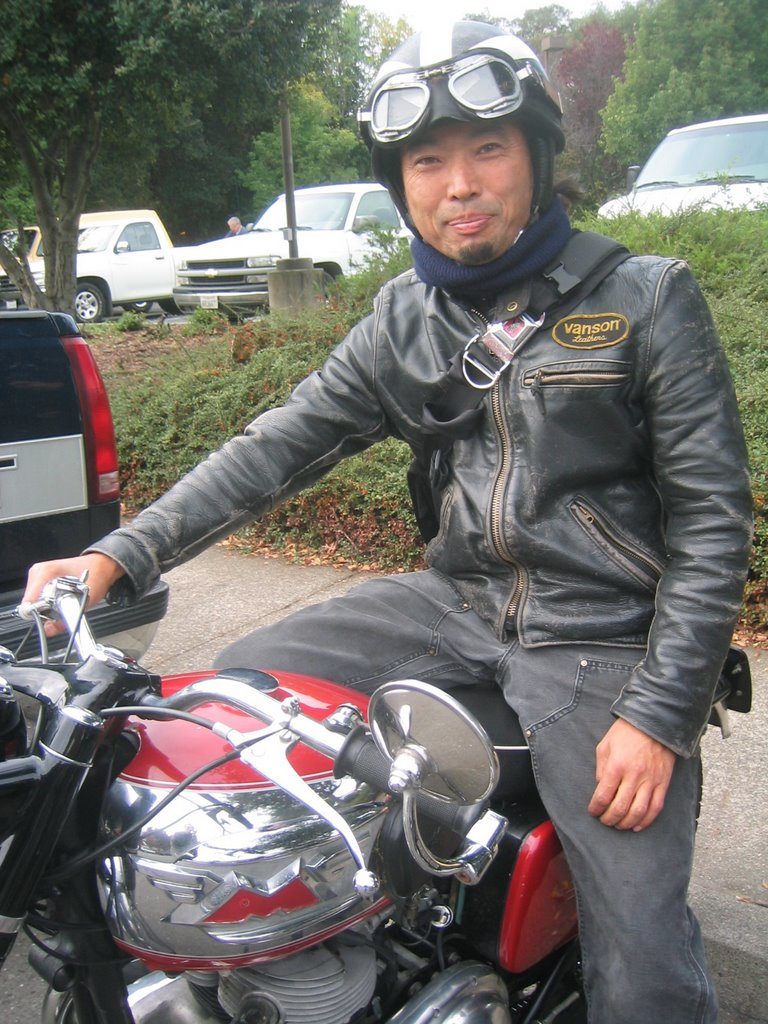
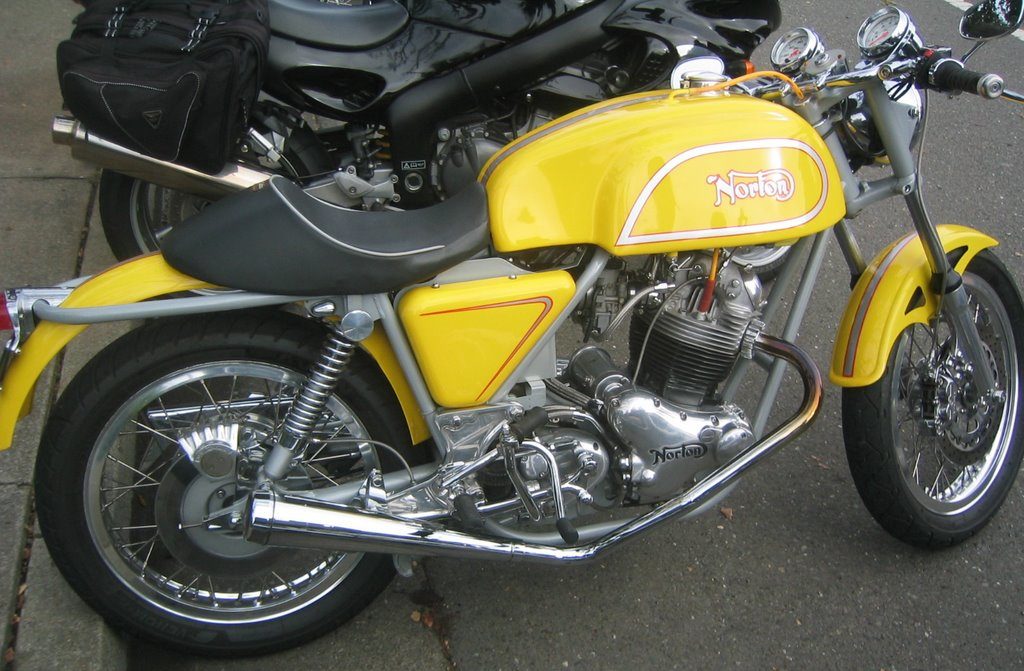
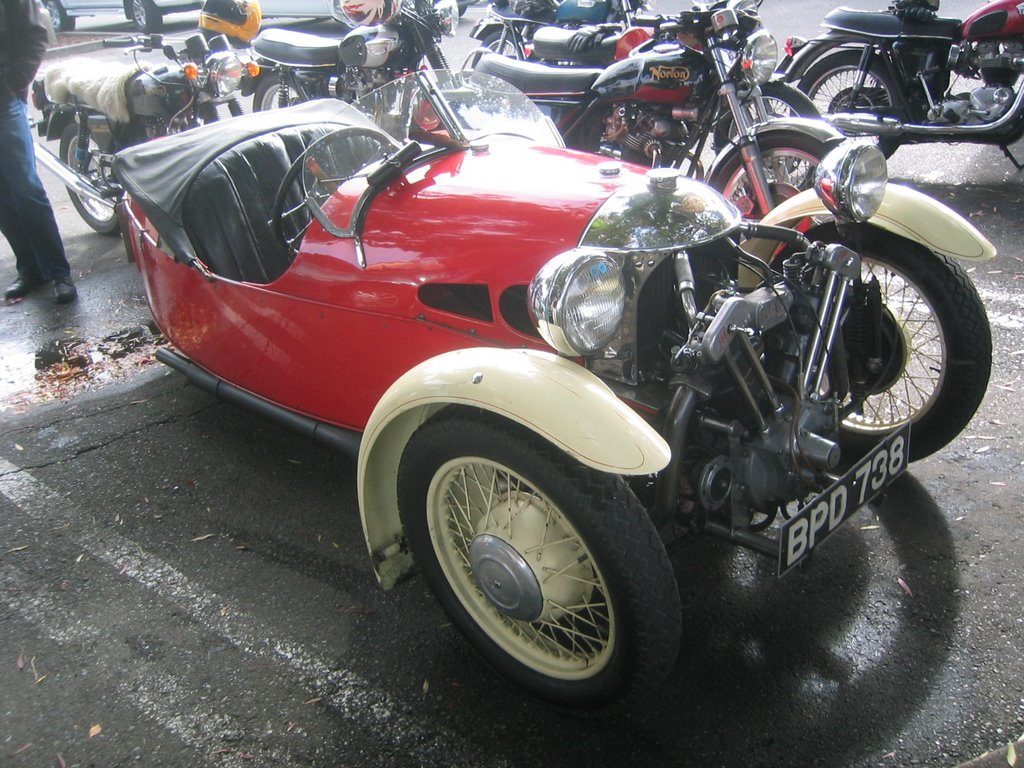
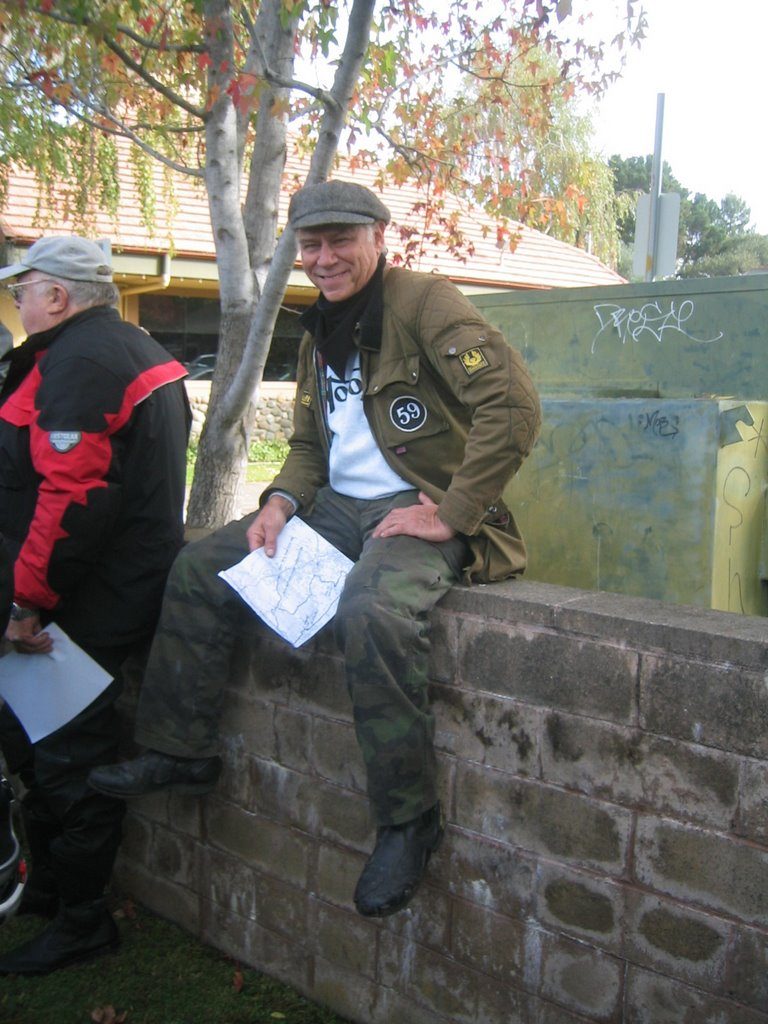

The Velocette KTT MkI
Regardless of the value of the Cyclone in the previous post, this is my idea of a truly compelling motorcycle: a Velocette KTT Mk1, built between 1928-1931. A real gem of a motorcycle, a landmark competition machine, and still cheaper than a new Harley-Davidson. Distinguishing features include a 350cc shaft-and-bevel driven OHC motor with ultra-narrow flywheels and lightened crankcases. Chain driven magneto (a square ML item), a 3-speed gearbox with no kickstarter but a strengthening strap connecting the rear of the crankcase with the footrest lug. The fuel and oil fillers are on the left, 'TT style', and the Webb front forks have an extra strengthening strut, and an André steering damper, which is totally unnecessary. The carburetor is an Amac racing item, and the footshift was the first in the industry to have a ratchet return - as seen on every motorcycle today. The KTT could be tuned for 100+mph, and many riders earned Gold Stars at Brooklands with them, running on alcohol.
